23 of the clearest waters on Earth
It’s like looking through glass.
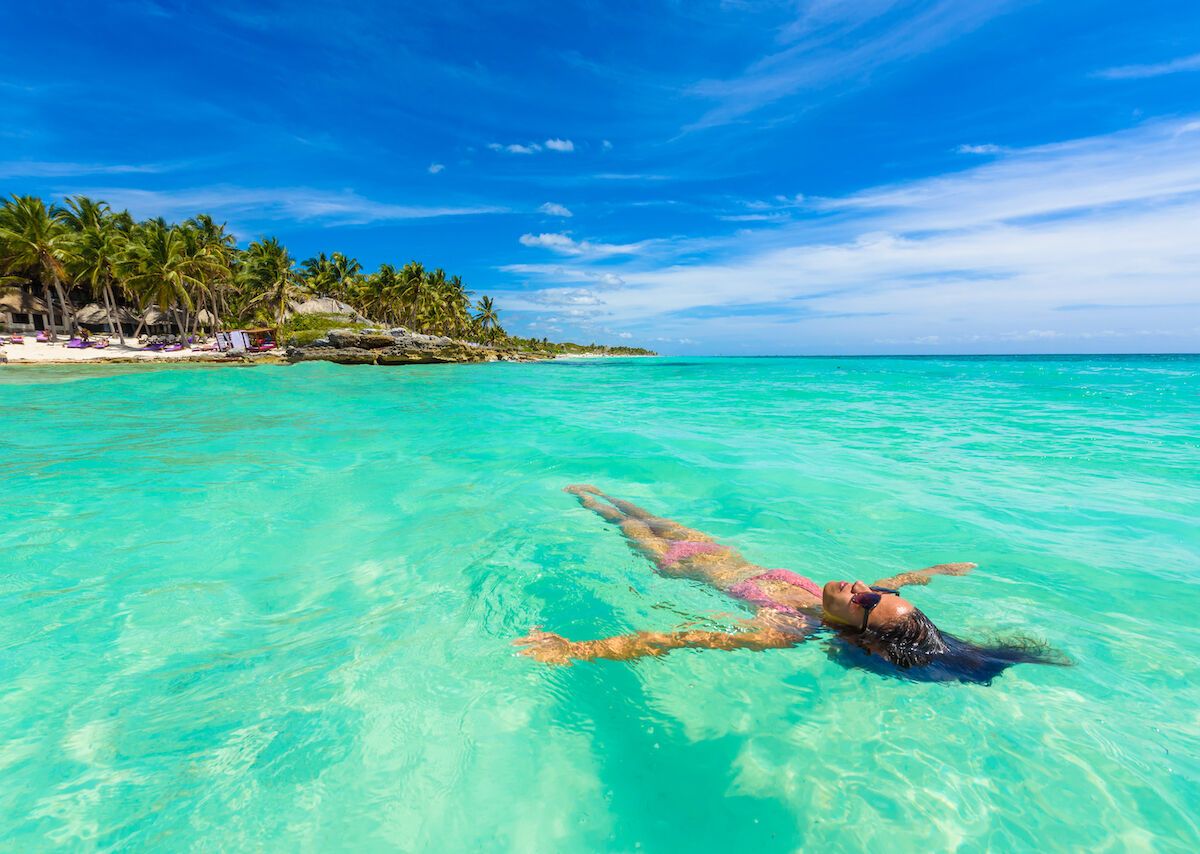
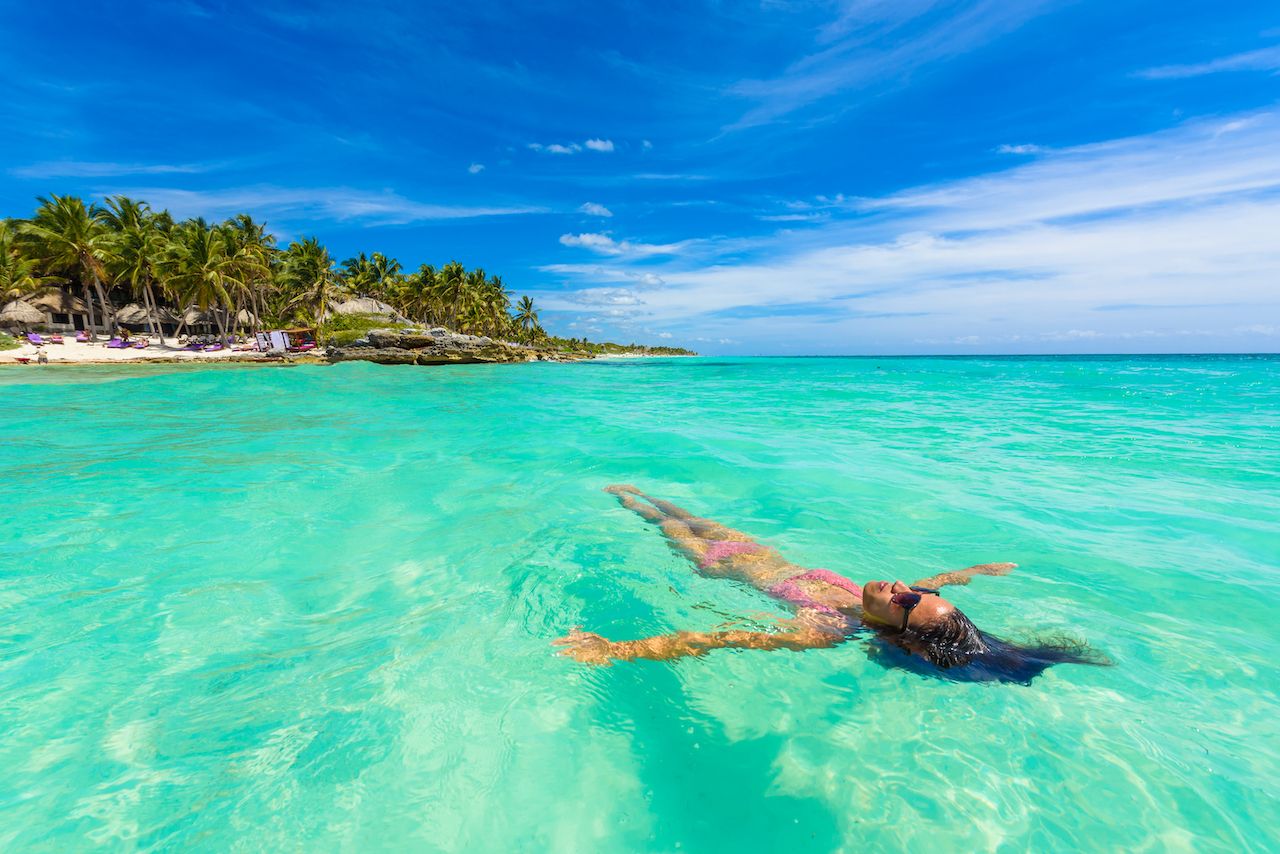
Seventy-one percent of our planet is covered in water, from vast oceans and deep mountain lakes to hidden cenotes and remote lagoons. While the names and boundaries of these bodies of water have shifted over time due to political, geographical, and historical changes, one thing remains constant: the mesmerizing beauty of the world’s bluest waters. These destinations captivate travelers with their striking clarity, vivid hues, and almost otherworldly tranquility. Whether caused by mineral-rich depths, coral-white sands, or glacial purity, the science behind their dazzling colors only adds to their allure.
Some seek out these high-visibility for world-class diving (from the shore, on the reefs, or otherwise). Others just want to stand on the sand and admire from a dry spot.
From the neon turquoise bays of Ko Phi Phi in Thailand to the crystalline shallows of Wineglass Bay in Australia and the deep sapphire expanse of Lake Tahoe in the US, these are the 23 bluest waters in the world that every traveler should witness at least once.
We hope you love the places we recommend! Just so you know, Matador may collect a small commission from the links on this page if you decide to book a stay.
Bora Bora, French Polynesia
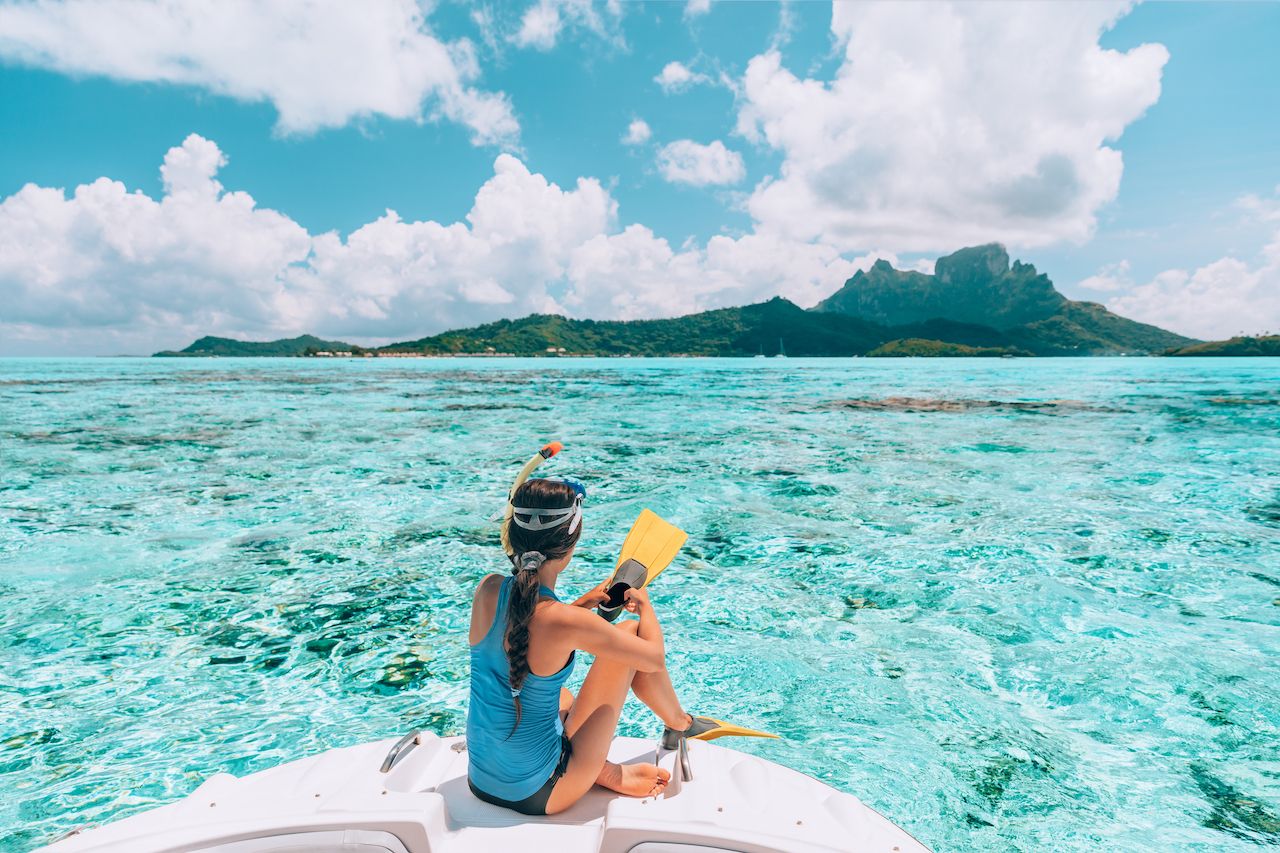
Photo: Maridav/Shutterstock
Home to a multitude of luxury resorts perched on stilts above the water, Bora Bora is synonymous with idyllic island escapes, drawing travelers from around the globe in search of the bluest waters in the world. The island’s dazzling turquoise lagoon—protected by a barrier reef—owes its striking clarity to the fine white sand and crushed coral that reflect sunlight, intensifying the water’s brilliant hue.
Beyond its beauty, Bora Bora offers countless ways to immerse yourself in its aquatic splendor. Snorkelers can glide through shallow reefs teeming with tropical fish, while divers explore coral gardens and manta ray cleaning stations. Dolphin and whale-watching tours provide unforgettable encounters with marine life, particularly during humpback migration season from July to November. For a more leisurely experience, glass-bottom boat tours, stand-up paddleboarding, and sunset cruises on traditional Polynesian outrigger canoes offer breathtaking views of the lagoon and its surrounding volcanic peaks.
Where to stay: The best Bora Bora hotels
Dog Island, Panama
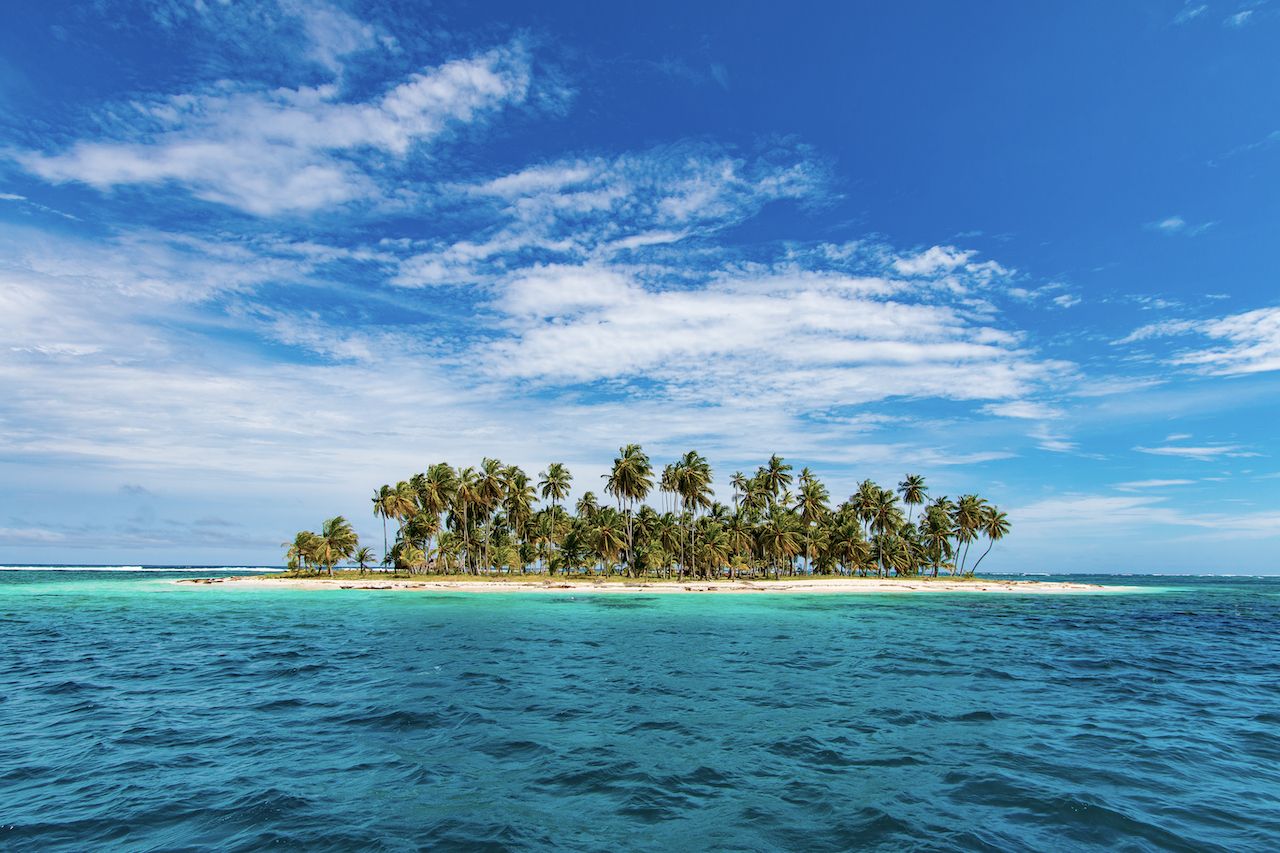
Photo: Ste Lane/Shutterstock
Dog Island is one of the San Blas Islands, an archipelago of more than 360 islands scattered off Panama’s northern Caribbean coast. Despite its name, you won’t find the island overrun with dogs—but what it lacks in canines, it makes up for with some of the clearest, bluest waters in the world. The shallow, crystal-clear sea surrounding Dog Island is largely untouched by pollution or heavy boat traffic, allowing for exceptional underwater visibility that makes it a top destination for snorkeling and diving.
One of the island’s most striking features is the partially submerged shipwreck just offshore. While the vessel’s exact history remains uncertain, its rusting frame has become an iconic sight, providing a habitat for vibrant marine life. Snorkelers can float above the wreck, spotting schools of tropical fish weaving through its structure, while divers get an even closer look at how nature has slowly reclaimed the remains. Beyond the wreck, the waters around Dog Island boast coral reefs filled with angelfish, parrotfish, and the occasional stingray gliding along the sandy seabed.
Where to stay: The best San Blas hotels
Five Flower Lake, China
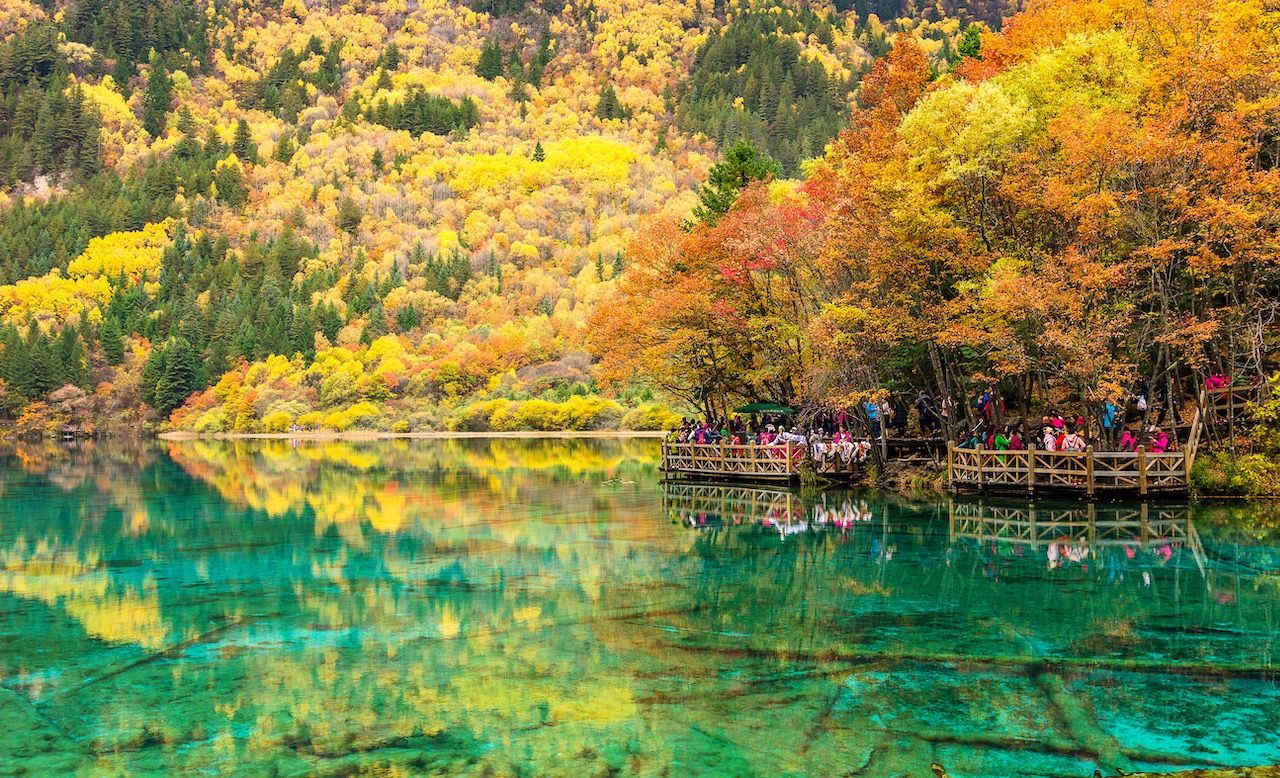
Photo: Raindear/Shutterstock
Five Flower Lake, one of the most breathtaking sights in Jiuzhaigou Valley National Park, is renowned for its strikingly clear, multicolored waters that shift between turquoise, jade, sapphire, and golden hues. Nestled within a UNESCO World Heritage-listed nature reserve in China’s Sichuan Province, the lake’s beauty is heightened by the surrounding ancient forests, whose vibrant seasonal colors reflect on the glass-like surface.
What makes Five Flower Lake particularly mesmerizing is its exceptional clarity—despite being only 16 feet deep, visitors can easily see the submerged crisscrossing tree trunks lying at the lake’s bottom. These fallen logs, preserved by the lake’s mineral-rich waters, create a mesmerizing underwater tapestry that appears almost surreal. The lake’s unique color palette is attributed to a combination of calcium carbonate deposits, aquatic plant life, and mineral-rich waters, which shift in tone depending on the time of day and season.
Adding to its allure, Five Flower Lake is one of the few in Jiuzhaigou that never freezes, thanks to a natural underwater hot spring. This makes it a year-round destination, with each season offering a new perspective: in autumn, fiery red and golden foliage frames the lake, while winter’s snow-dusted trees contrast beautifully with the lake’s vivid blues.
Where to stay: The best hotels near Five Flower Lake
Ko Phi Phi, Thailand
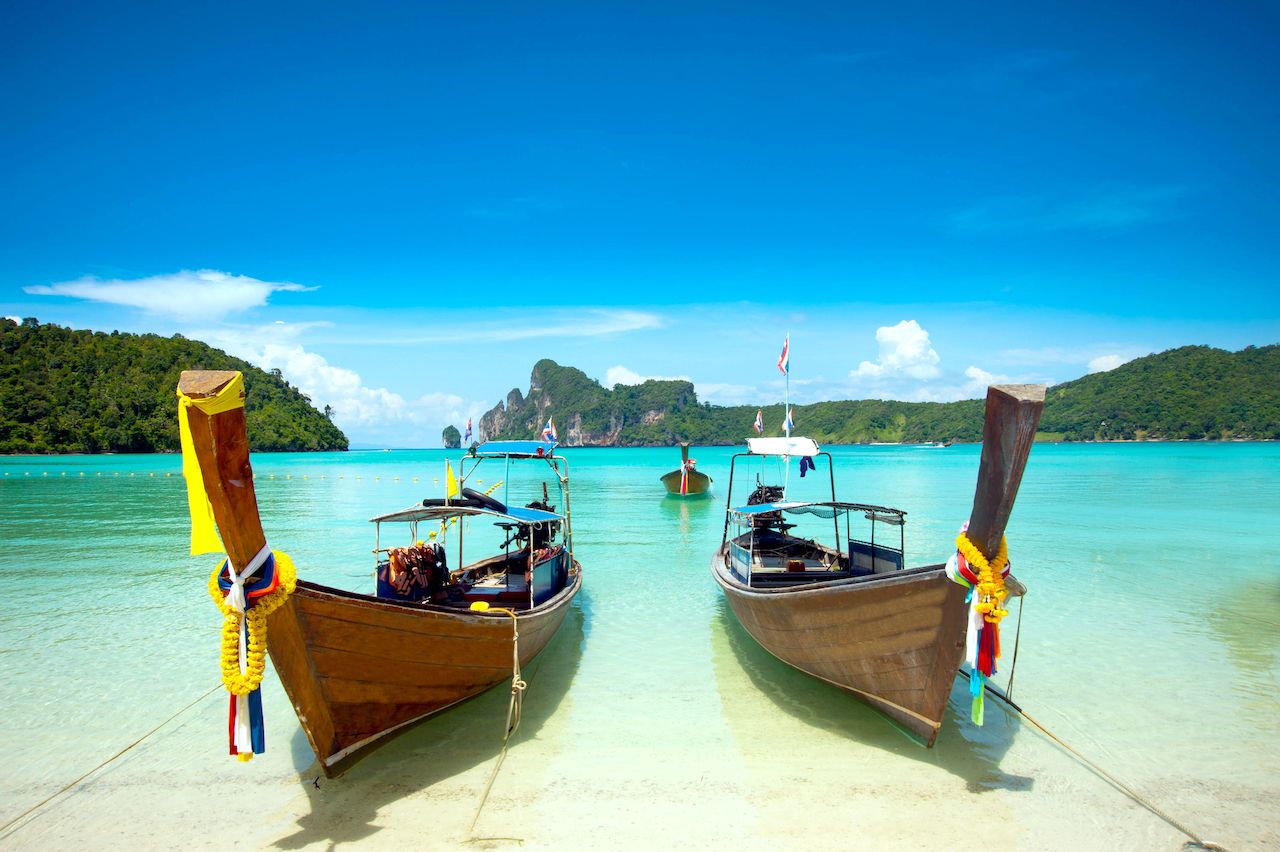
Photo: C_KAWI/Shutterstock
The Phi Phi Islands, an iconic archipelago in Thailand’s Andaman Sea, are celebrated for their unbelievably clear, turquoise waters, soft white-sand beaches, and lush tropical vegetation. The group consists of six islands, with the largest and only inhabited one being Ko Phi Phi Don, while Ko Phi Phi Leh, the second largest, remains uninhabited but world-famous for its untouched beauty.
What sets the Phi Phi Islands apart is their dramatic limestone karsts—towering rock formations that jut out of the sea, creating a breathtaking landscape of hidden lagoons, sheer cliffs, and secluded coves. These karsts, sculpted over millions of years, provide a stunning contrast to the crystal-clear waters below, making the area one of the most photographed and visited destinations in Thailand.
Phi Phi Leh, in particular, gained global fame as the filming location for The Beach (2000), the cult-favorite film starring Leonardo DiCaprio. The movie showcased the now-iconic Maya Bay, a crescent-shaped beach framed by towering limestone cliffs and brilliantly clear blue waters. While Maya Bay was closed for environmental restoration for several years, it has since reopened with conservation measures in place, allowing visitors to once again experience its breathtaking scenery while helping to protect its fragile marine ecosystem.
Beyond its stunning landscapes, the Phi Phi Islands are a hub for snorkeling, diving, and kayaking, offering up-close encounters with colorful coral reefs, vibrant marine life, and hidden caves.
Where to stay: The best Phi Phi Islands hotels
Cayos Cochinos, Honduras
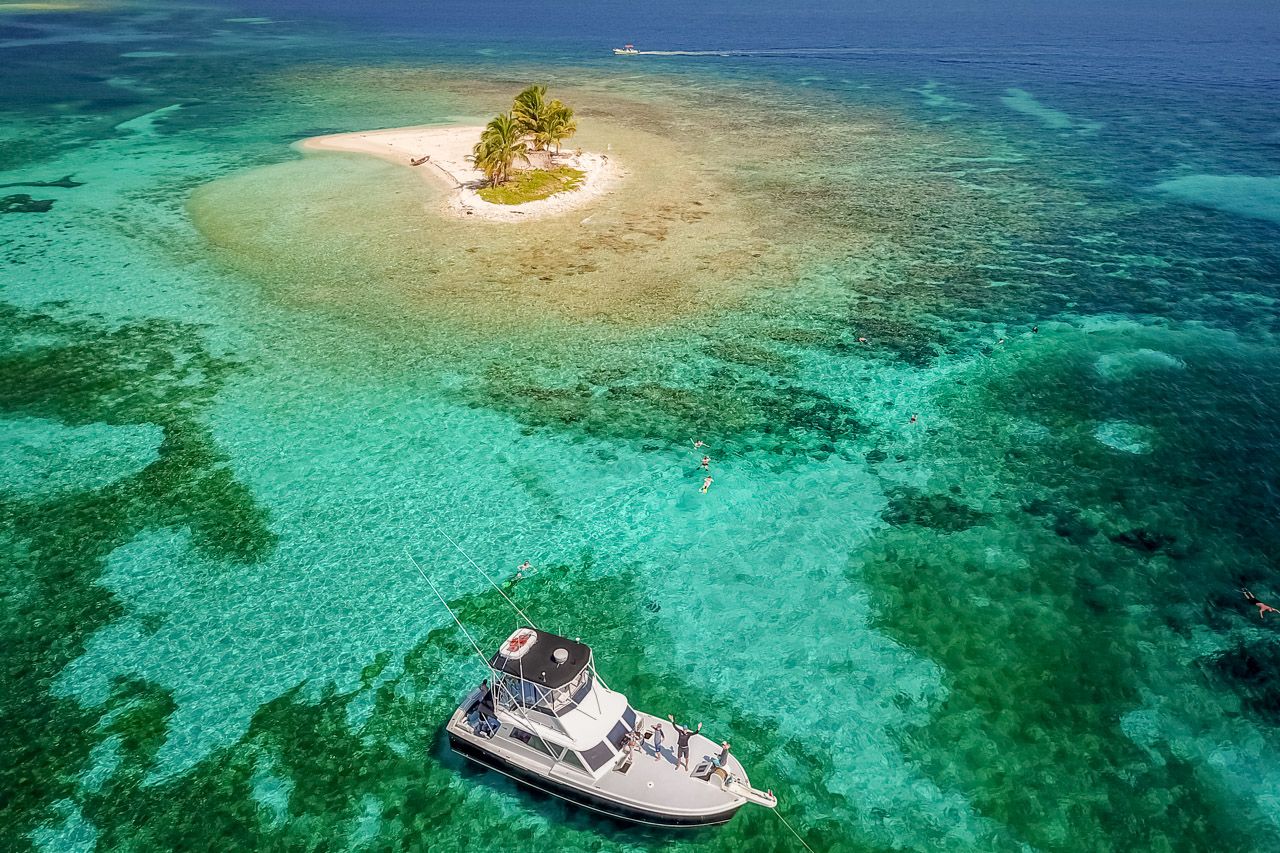
Photo: Kieran Reeves Photography/Shutterstock
The Cayos Cochinos, an unspoiled Caribbean paradise off the northern coast of Honduras, consists of two small islands and over a dozen tiny coral cays, collectively forming a protected marine reserve within the Mesoamerican Barrier Reef System—the second-largest coral reef in the world. Under the protection of the Honduran government and the Honduran Coral Reef Foundation, these islands remain free from large-scale tourism, commercial fishing, and resort development, preserving their pristine waters and delicate ecosystems.
What makes Cayos Cochinos truly special is its exceptional marine biodiversity. The absence of large hotels and infrastructure has allowed the surrounding coral reefs to thrive, making this one of the best scuba diving and snorkeling destinations in the world. Divers and snorkelers can explore an underwater wonderland teeming with colorful coral formations, sea turtles, eagle rays, and hundreds of fish species, including the elusive Honduran hogfish, which is found nowhere else on Earth.
Because there are no airports or major ports, Cayos Cochinos is only accessible by boat, typically from La Ceiba or Roatán. This exclusivity has helped the islands maintain their status as a true hidden gem in the Caribbean. Visitors can enjoy day trips to hike through the jungle-covered interiors, relax on untouched beaches, and interact with the local Garifuna community, who have lived sustainably on the islands for generations.
Where to stay: The best Cayos Cochinos hotels
Moraine Lake, Canada
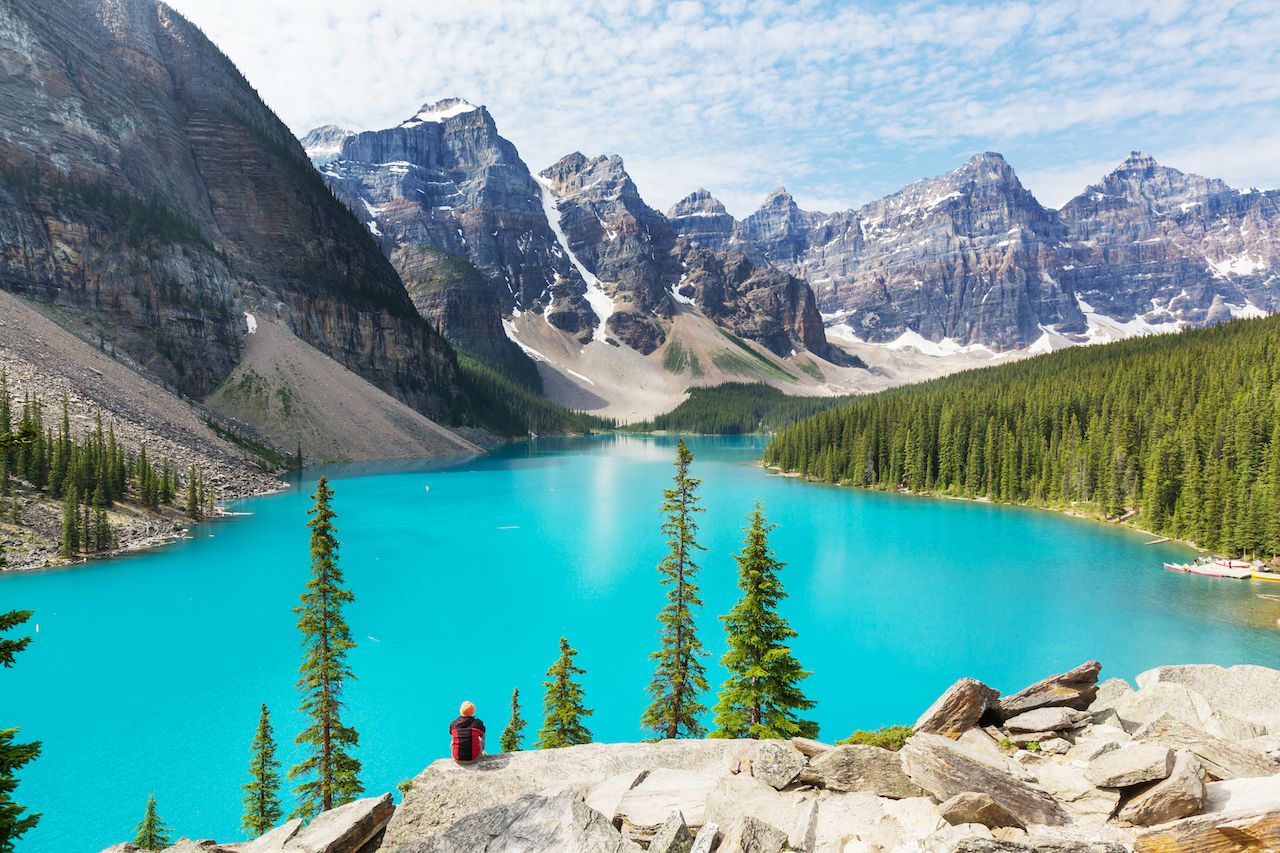
Photo: Galyna Andrushko/Shutterstock
Located in Alberta’s Banff National Park, in the breathtaking Valley of the Ten Peaks, Moraine Lake is one of the most photographed and iconic glacial lakes in the world. Fed by glaciers high in the Canadian Rockies, the lake’s striking turquoise color comes from rock flour—fine sediment ground down by glacial activity—that remains suspended in the water, reflecting sunlight to create its otherworldly blue hue.
The dramatic alpine scenery surrounding Moraine Lake only enhances its beauty. Towering above the lake are the Ten Peaks, a jagged row of snow-capped mountains that form a picture-perfect backdrop. The lake is also framed by dense evergreen forests, cascading waterfalls, and rugged cliffs, making it one of Canada’s most breathtaking natural wonders.
Accessible from late spring through early fall, Moraine Lake’s color is at its most vibrant in July and August, when glacial meltwater is at its peak. Visitors can take in the scenery from rocky viewpoints along the lakeshore, rent a canoe to glide across the mirror-like surface, or hike nearby trails such as the Rockpile Trail, which leads to the famous postcard-perfect viewpoint overlooking the lake. For those looking for a more adventurous experience, the Larch Valley and Sentinel Pass hikes offer panoramic views of the valley and surrounding peaks, particularly stunning in autumn when golden larch trees contrast with the lake’s brilliant blue waters.
Where to stay: The best Moraine Lake hotels
The Maldives
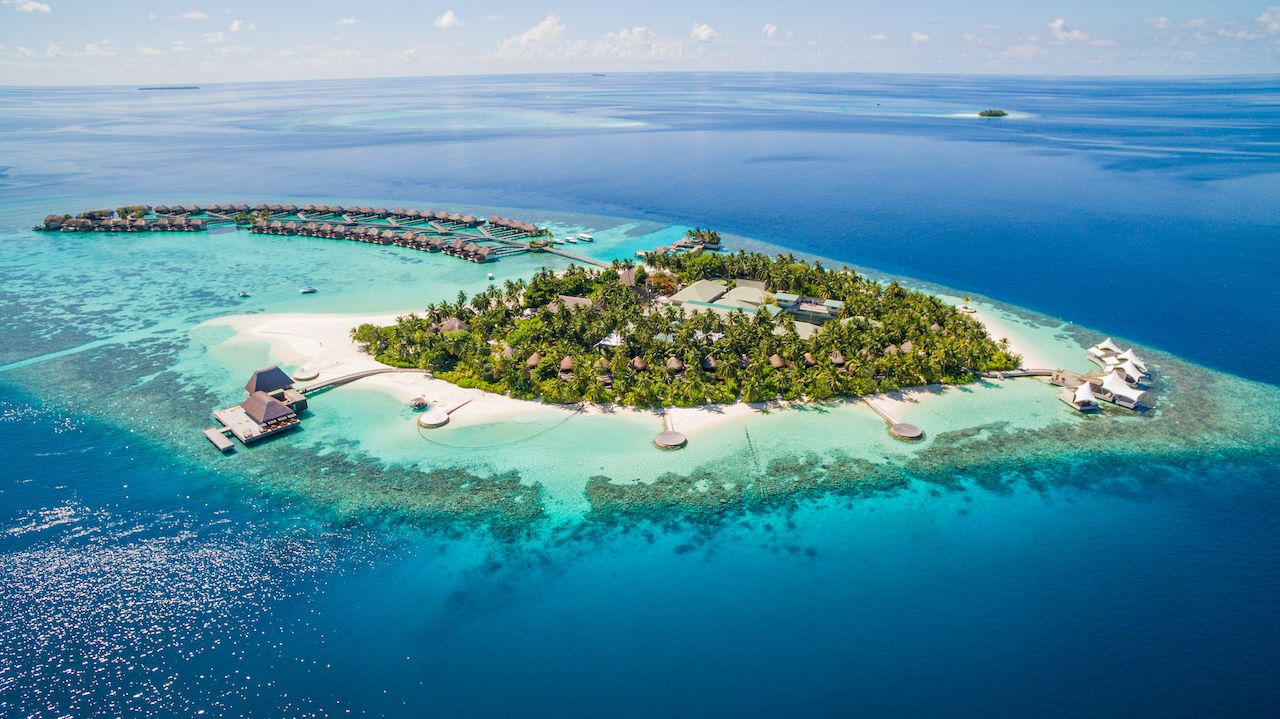
Photo: Firushan Numaan/Shutterstock
The Maldives, an island nation in the Indian Ocean, is renowned for its unparalleled natural beauty, crystal-clear waters, and thriving marine life. Comprising 26 atolls and over 1,000 coral islands, the Maldives holds the distinction of being the lowest-elevation country on Earth, with most islands sitting less than five feet above sea level. This unique geography (which makes an island hopping trip easy), combined with pristine coral reefs and warm, translucent waters, makes it one of the world’s premier destinations for snorkeling and scuba diving.
The Maldives’ shallow lagoons and deep-sea drop-offs are teeming with marine biodiversity. Divers and snorkelers can encounter manta rays, whale sharks, sea turtles, and vibrant coral gardens in waters so clear they often provide visibility of up to 100 feet. Some of the best-known diving spots include Ari Atoll, Baa Atoll (a UNESCO Biosphere Reserve), and North Malé Atoll, where thriving reef ecosystems and rare pelagic species can be observed. Night snorkeling and bioluminescent beaches—where the water glows due to phytoplankton—offer unforgettable experiences unique to the region.
Beyond its world-class underwater attractions, the Maldives is synonymous with luxury and seclusion. The country is famous for its overwater bungalows and cabana-style resorts, many of which offer private pools, direct lagoon access, and glass floors for viewing the marine life below. These resorts provide a blend of high-end hospitality, eco-conscious design, and exclusivity, making the Maldives a sought-after escape for honeymooners, celebrities, and adventure seekers alike.
For those looking beyond relaxation, the Maldives also offers wildlife encounters, dolphin-watching cruises, sandbank picnics, and traditional Maldivian fishing excursions.
Where to stay: The best Maldives resorts
Navagio Beach, Greece
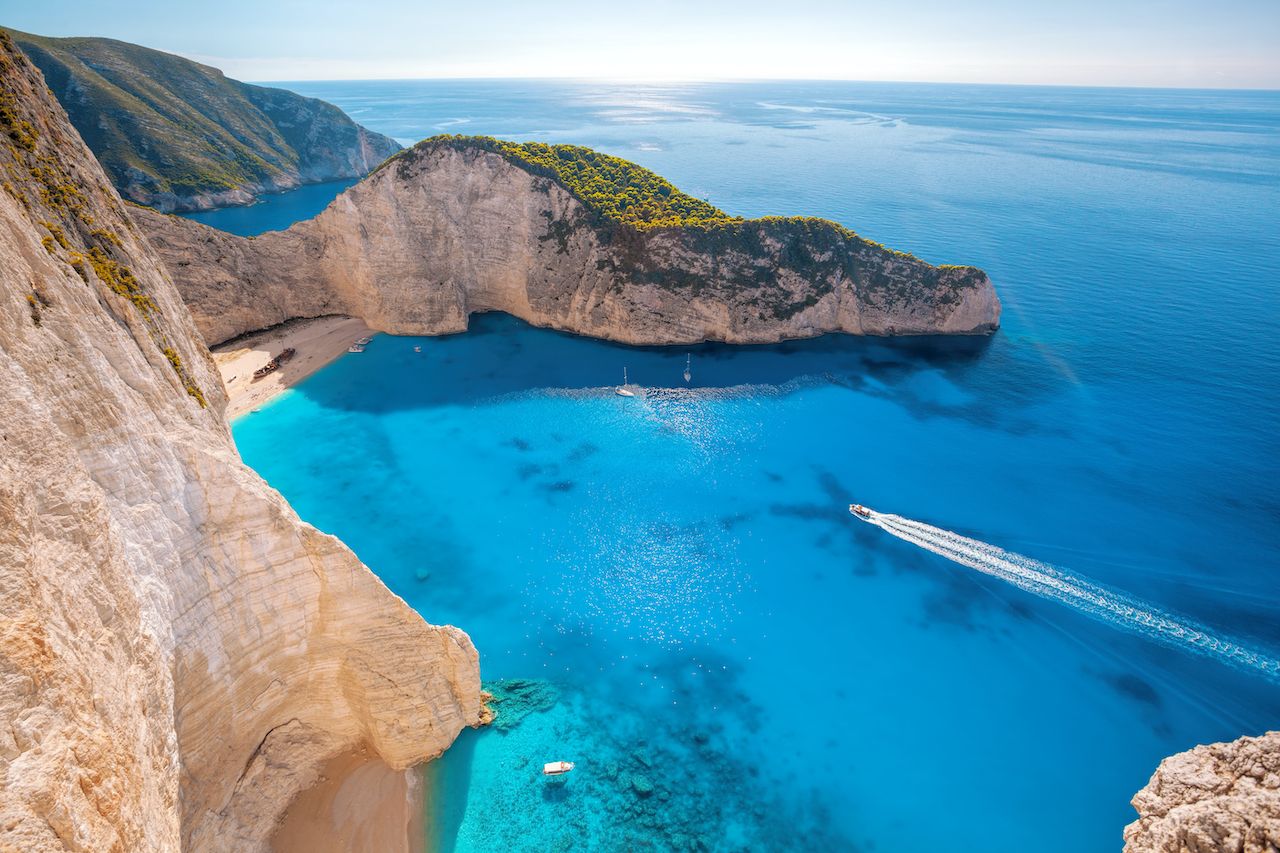
Photo: Samot/Shutterstock
Located off the coast of Zakynthos, one of Greece’s Ionian Islands, Navagio Beach — often referred to as Shipwreck Beach — is one of the most breathtaking and photographed beaches in the world. The cove is accessible only by boat, adding to its secluded and almost mythical allure. It is surrounded by towering white limestone cliffs, which contrast strikingly with the vivid turquoise waters and soft, powdery sand, making it a must-visit destination in Greece.
What truly sets Navagio Beach apart is its mysterious shipwreck, which sits half-buried in the sand, rusting under the Greek sun. The wreck, known as the Panagiotis, ran aground in 1980, allegedly while smuggling contraband cigarettes, alcohol, and possibly even illicit goods. According to local legend, the crew was operating on behalf of the Italian mafia, but fled the scene when the Greek authorities gave chase, leaving the ship to its fate. Whether fact or fiction, the wreckage has since become an iconic landmark, drawing thousands of visitors who come to explore its eerie, weathered remains up close.
Beyond its shipwrecked centerpiece, Navagio Beach offers unparalleled natural beauty. The surrounding limestone cliffs, rising sharply from the sea, provide a dramatic panoramic view, especially from the famous Navagio Viewpoint, located on a cliff edge above the cove. Visitors can take in breathtaking aerial vistas, where the contrast between the deep blue Ionian Sea, the white cliffs, and the rusted wreck creates an almost surreal scene.
Since the only way to reach Navagio Beach is by boat, visitors typically depart from Porto Vromi, Agios Nikolaos, or Zakynthos Town, with many boat tours including stops at the Blue Caves, where the water glows in shades of electric blue due to the reflection of sunlight on the limestone walls.
Where to stay: The best hotels near Navagio Beach
Linapacan Island, Philippines
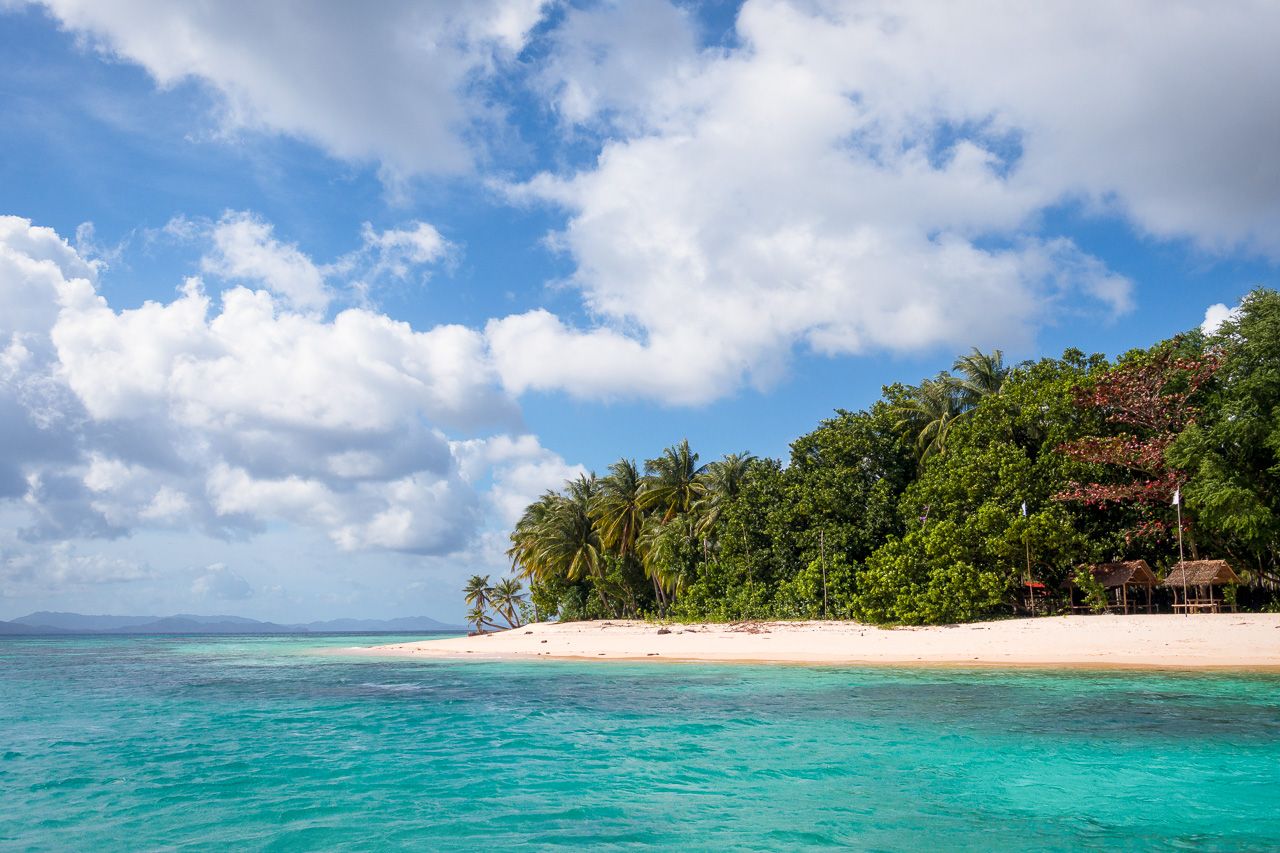
Photo: N8Allen/Shutterstock
Tucked between El Nido and Coron in the province of Palawan, Philippines, Linapacan Island is a hidden gem known for having some of the clearest waters in the world. The island is part of a larger archipelago, surrounded by 52 mostly uninhabited islands, each boasting pristine white-sand beaches, vibrant coral reefs, and untouched natural beauty. Despite its spectacular scenery, Linapacan remains relatively undiscovered, offering visitors a chance to experience a tropical paradise without the crowds found in more famous Philippine destinations.
Beyond its stunning waters, Linapacan is rich in history and adventure. The island is home to the Seniora Caves, believed to be over a million years old, featuring dramatic limestone formations, hidden chambers, and subterranean pools. Exploring these caves offers a glimpse into the island’s prehistoric past, while their cool interiors provide a refreshing escape from the tropical heat. History enthusiasts can also visit the ruins of an old Spanish fortress, built during the colonial era to guard against pirate raids. Though weathered by time, the remains of the fort serve as a testament to Linapacan’s historical significance.
For outdoor adventurers, Linapacan’s rugged jungle trails provide excellent opportunities for hiking and wildlife spotting. The island’s interior is covered in dense rainforest, home to exotic birds, endemic flora, and towering coconut palms. Hikers can venture to elevated viewpoints, where panoramic vistas of turquoise lagoons and distant islands create a truly unforgettable scene.
Tucked between El Nido and Coron in the province of Palawan, Philippines, Linapacan Island is a hidden gem known for having some of the clearest waters in the world. The island is part of a larger archipelago, surrounded by 52 mostly uninhabited islands, each boasting pristine white-sand beaches, vibrant coral reefs, and untouched natural beauty. Despite its spectacular scenery, Linapacan remains relatively undiscovered, offering visitors a chance to experience a tropical paradise without the crowds found in more famous Philippine destinations.
Beyond its stunning waters, Linapacan is rich in history and adventure. The island is home to the Seniora Caves, believed to be over a million years old, featuring dramatic limestone formations, hidden chambers, and subterranean pools. Exploring these caves offers a glimpse into the island’s prehistoric past, while their cool interiors provide a refreshing escape from the tropical heat. History enthusiasts can also visit the ruins of an old Spanish fortress, built during the colonial era to guard against pirate raids. Though weathered by time, the remains of the fort serve as a testament to Linapacan’s historical significance.
For outdoor adventurers, Linapacan’s rugged jungle trails provide excellent opportunities for hiking and wildlife spotting. The island’s interior is covered in dense rainforest, home to exotic birds, endemic flora, and towering coconut palms. Hikers can venture to elevated viewpoints, where panoramic vistas of turquoise lagoons and distant islands create a truly unforgettable scene.
Despite its secluded nature, Linapacan has two small towns, each with a population of about 2,000 residents, offering a glimpse into traditional Filipino island life. Unlike the bustling resorts of El Nido or Coron, Linapacan remains largely undeveloped, with minimal tourist infrastructure, making it an ideal destination for those seeking off-the-grid exploration. The best way to experience Linapacan is by island-hopping boat tours, which allow travelers to explore remote beaches, vibrant snorkeling sites, and the crystal-clear waters that make this region so special.
Where to stay: The best Airbnbs near Linapacan Island
Jenny Lake, USA
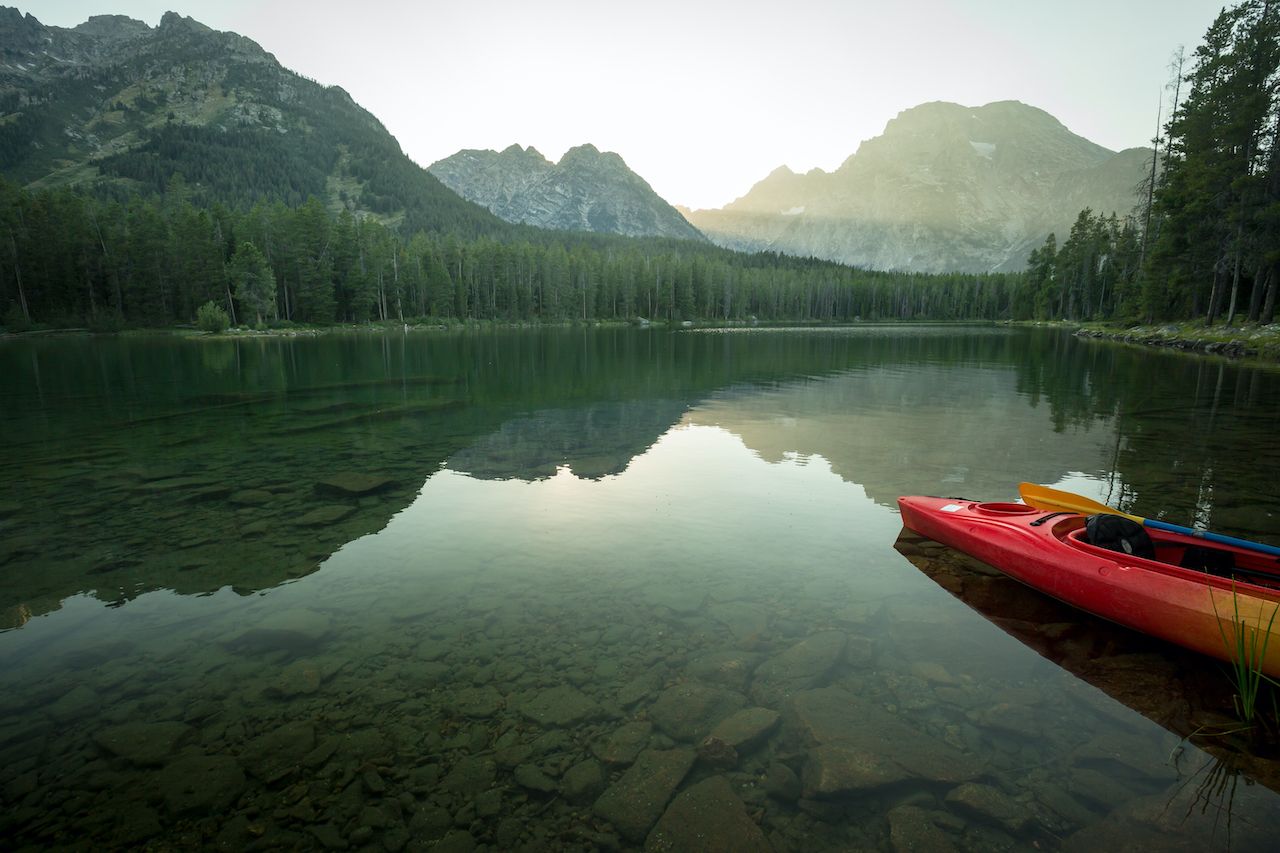
Photo: Evan Austen/Shutterstock
Jenny Lake is one of Wyoming’s most breathtaking alpine lakes, known for its stunningly clear waters, mirror-like reflections, and easy access to some of the park’s best hiking trails. Formed by glaciers over 12,000 years ago, the lake covers approximately 1,191 acres and reaches depths of up to 256 feet, making it one of the deepest lakes in the Tetons. Its pristine waters, fed by glacial runoff, take on a brilliant blue hue, particularly under the midday sun, creating an awe-inspiring contrast against the jagged peaks towering above.
Jenny Lake serves as the gateway to several of Grand Teton National Park’s most popular hikes, offering direct access to Cascade Canyon, Hidden Falls, Inspiration Point, and Paintbrush Canyon. The Cascade Canyon Trail is one of the park’s most scenic, leading hikers through lush forests, past cascading waterfalls, and alongside dramatic mountain cliffs, with frequent sightings of moose, black bears, and marmots. The Hidden Falls Trail offers a shorter but rewarding trek to a 100-foot waterfall, while Inspiration Point provides a panoramic overlook of Jenny Lake and the Teton Range.
Unlike most of the glacial lakes in Jackson Hole, Jenny Lake is one of only two that allow motorboat access, yet this does little to disrupt the clarity or serenity of the water. Visitors can take the Jenny Lake shuttle boat, a 12-minute scenic ride that shortens the hiking distance to Inspiration Point and Cascade Canyon. For those seeking a more immersive experience, kayaking, canoeing, and paddleboarding are also popular ways to explore the lake’s glassy waters and dramatic shoreline.
Where to stay: The best Airbnbs near Jenny Lake
Lake Pukaki, New Zealand
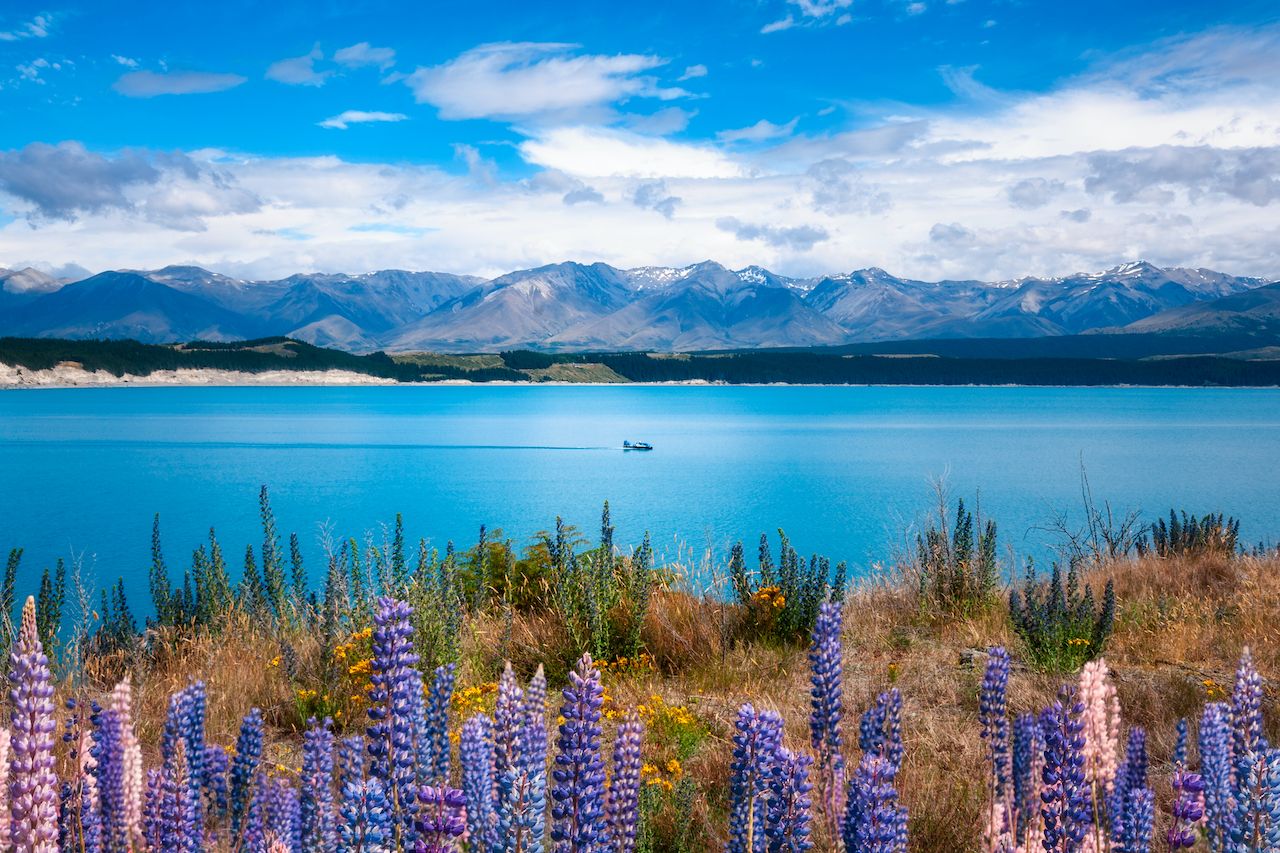
Photo: Daniela Constantinescu/Shutterstock
Lake Pukaki, the largest of three near-parallel glacial lakes in New Zealand’s Mackenzie Basin, is one of the most strikingly blue lakes in the world. Nestled on the South Island, this alpine, glacier-fed lake covers 178 square kilometers (69 square miles) and is renowned for its unreal turquoise color, which shifts in intensity depending on the light and weather conditions.
The lake’s vibrant blue hue is a result of glacial flour—fine rock particles ground down by ancient glaciers and carried into the lake by meltwater from the Tasman Glacier, located in nearby Aoraki/Mount Cook National Park. These microscopic particles remain suspended in the water, scattering sunlight and producing the lake’s mesmerizing milky blue glow. On clear days, when the sunlight hits the surface at just the right angle, Lake Pukaki appears to radiate an almost otherworldly shade of electric blue, making it a photographer’s dream.
Beyond its awe-inspiring color, Lake Pukaki offers breathtaking panoramic views of New Zealand’s highest peak, Aoraki/Mount Cook (12,218 feet), which dominates the horizon to the north. The surrounding snow-capped mountains, vast open skies, and rolling tussock grasslands create an untouched, dramatic landscape that embodies the raw beauty of New Zealand’s South Island.
Visitors to Lake Pukaki can enjoy a range of outdoor activities, including scenic drives along the lake’s edge, hiking, cycling, and stargazing. The area is part of the Aoraki Mackenzie International Dark Sky Reserve, one of the best places on Earth for stargazing and astrophotography, where the Milky Way, Southern Cross, and Magellanic Clouds shine brightly in the unpolluted night sky. The Alps 2 Ocean Cycle Trail, one of New Zealand’s most scenic cycling routes, also passes by the lake, offering riders uninterrupted views of its turquoise waters and surrounding peaks.
Where to stay: The best Lake Pukaki hotels
Mo’orea, French Polynesia
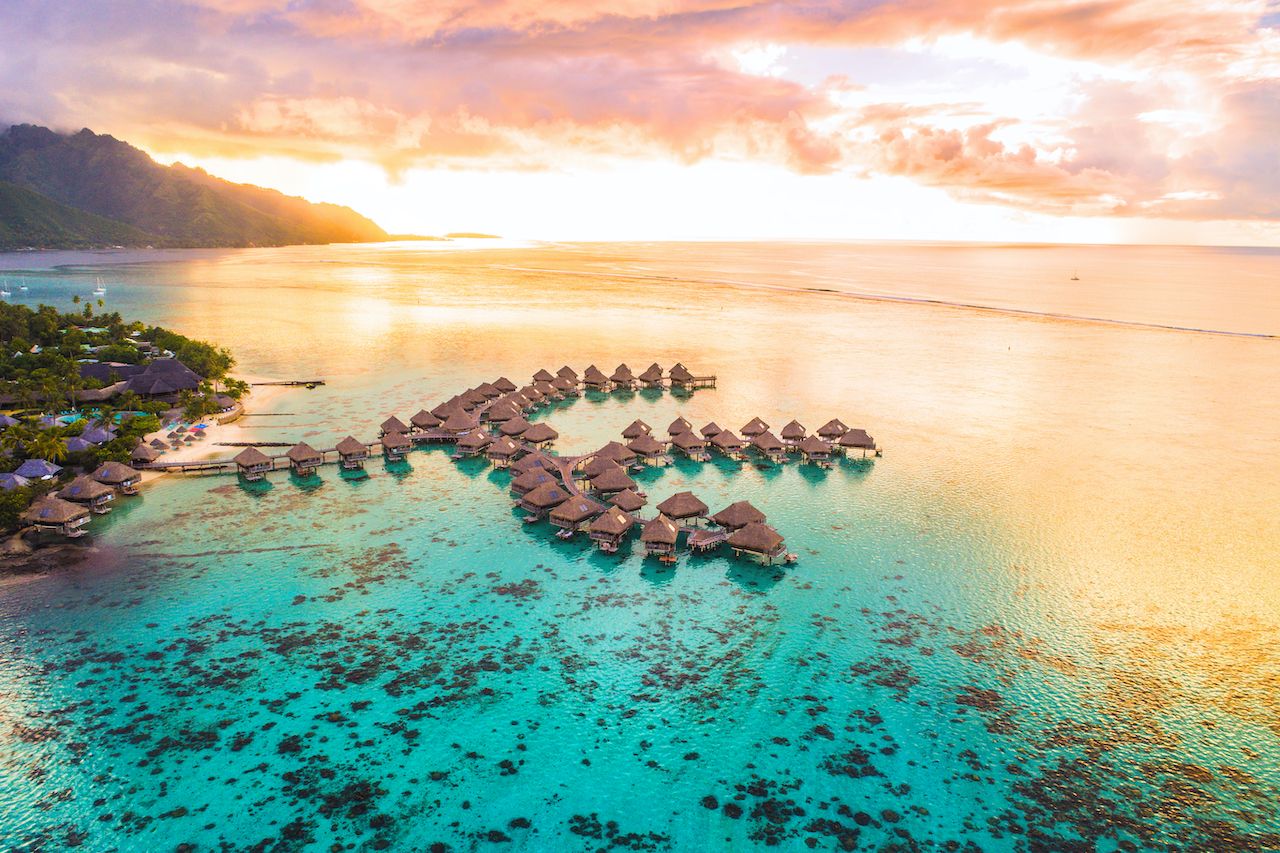
Photo: Maridav/Shutterstock
Thanks to its picture-perfect blue waters, lush volcanic peaks, and vibrant coral reefs, Mo’orea has earned a reputation as one of the most romantic and breathtaking islands in the South Pacific. Located just 10 nautical miles (17 kilometers) northwest of Tahiti, this heart-shaped island is often seen as a quieter, less commercialized alternative to its more famous neighbor, Bora Bora. With its idyllic turquoise lagoon, cascading waterfalls, and emerald-green mountains, Mo’orea has become a sought-after honeymoon and luxury travel destination, offering both adventure and tranquility in equal measure.
Mo’orea’s stunning landscape is defined by sharp volcanic ridges, tropical meadows, and hidden valleys, where coconut groves and pineapple plantations flourish under the island’s warm, sun-drenched skies. The peaceful villages that dot the coastline feature pastel-painted homes and welcoming local markets, adding to the island’s laid-back, untouched charm.
For outdoor enthusiasts, Mo’orea is a paradise of exploration and adventure. The island’s calm, crystal-clear lagoon is ideal for snorkeling, kayaking, and stand-up paddleboarding, where visitors can encounter colorful coral gardens, stingrays, reef sharks, and an abundance of tropical fish. Scuba divers can explore underwater caves and thriving marine ecosystems, while those seeking a more relaxed experience can embark on a catamaran cruise at sunset, watching the sky turn shades of pink and gold over the lagoon.
On land, Mo’orea’s rugged interior offers some of the best hiking in French Polynesia. Trails lead to panoramic viewpoints like Belvedere Lookout, where visitors can take in jaw-dropping views of Opunohu Bay, Cook’s Bay, and the towering peaks of Mount Rotui. For a cultural experience, travelers can visit archaeological sites and ancient Polynesian temples (marae) that offer a glimpse into the island’s rich history.
Where to stay: The best Mo’orea hotels
Great Barrier Reef, Australia
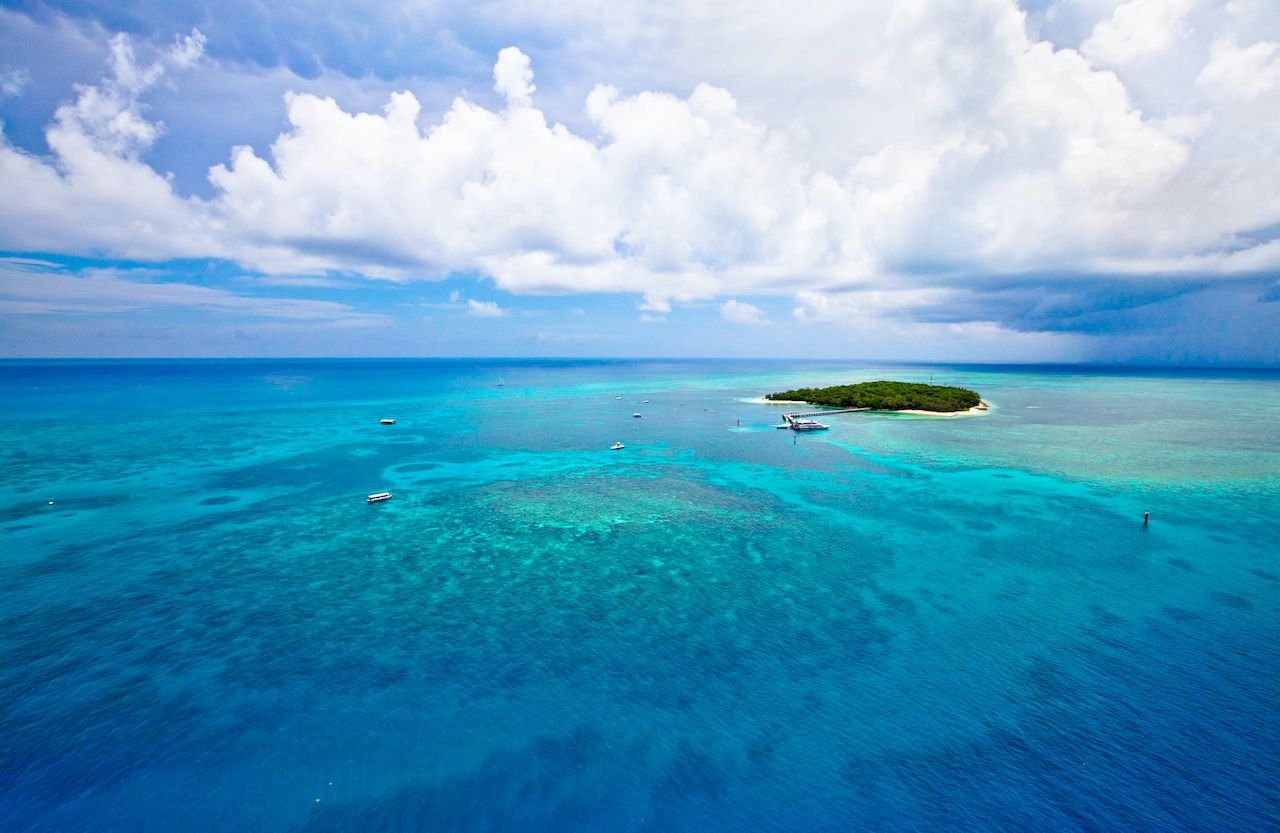
Photo: Renjie Sun/Shutterstock
The Great Barrier Reef, the largest coral reef system on Earth, is one of the most breathtaking and biodiverse marine environments in the world. Stretching over 1,400 miles along Australia’s northeastern coast, this UNESCO World Heritage site is composed of over 2,900 individual reefs and 900 islands, making it one of the most complex and expansive living structures on the planet—so vast that it can even be seen from space.
What sets the Great Barrier Reef apart is its stunningly clear, electric blue waters, which provide exceptional visibility for snorkeling and diving. The reef’s pristine clarity is largely due to low sediment levels and minimal human interference, allowing visitors to witness its thriving marine life in vivid detail. The reef’s crystal-clear waters house a staggering 1,500 species of fish, 400 types of coral, 30 species of whales and dolphins, and six of the world’s seven species of sea turtles. Divers and snorkelers can encounter everything from graceful manta rays and massive potato cod to the vibrant hues of parrotfish and clownfish darting through anemones.
Recognized as one of the Seven Natural Wonders of the World, the reef was designated a World Heritage Site in 1981, underscoring its global ecological and cultural significance. Strict conservation measures have been implemented to protect its waters from overfishing, pollution, and tourism-related damage, ensuring that it remains one of the most unspoiled marine habitats in existence.
However, climate change poses an urgent and growing threat to the Great Barrier Reef. Rising ocean temperatures and increased acidity have led to mass coral bleaching events, where stressed corals expel the algae that give them color and nutrients, leaving behind white, fragile skeletons. While some areas of the reef have shown resilience, ongoing environmental pressures could permanently alter this delicate ecosystem. Conservation initiatives, including coral restoration projects, marine protected areas, and sustainable tourism practices, are being actively pursued to mitigate damage and ensure the reef’s survival for future generations.
Where to stay: The best Airbnbs near the Great Barrier Reef and the best hotels near the Great Barrier Reef
Corfu, Greece
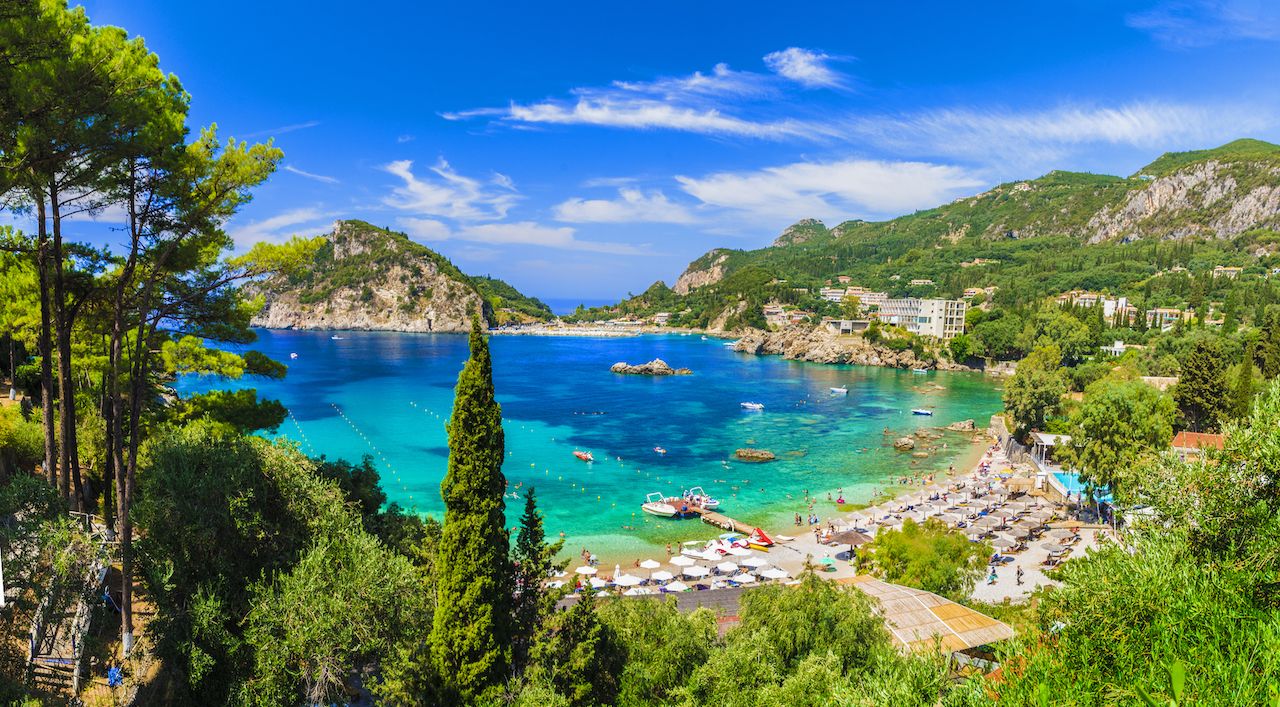
Photo: Balate Dorin/Shutterstock
The island of Corfu, the second largest of Greece’s Ionian Islands, is renowned for its incredibly clear, turquoise waters, dramatic coastline, and rich history that reflects a blend of Venetian, French, and British influences. Corfu’s beaches vary from soft white sands to rugged limestone cliffs, but one of its most fascinating and unique coastal formations is found at Canal d’Amour, a natural wonder located in the seaside village of Sidari on the island’s northern coast.
Canal d’Amour Beach is famous for its rectangular inlet, flanked by sand-colored limestone cliffs that have been naturally sculpted by wind and waves over thousands of years. These cliffs form a series of coves, underwater caves, and narrow passageways, giving the area its strikingly unique appearance. The beach gets its name, “Channel of Love,” from a local legend that claims couples who swim together through the narrow sea tunnel will soon get married or enjoy a lifetime of happiness together. This romantic myth, combined with the cove’s stunning aquamarine waters and smooth sandstone formations, makes Canal d’Amour one of Corfu’s most iconic and photographed locations.
Beyond its enchanting folklore and natural beauty, Canal d’Amour is an excellent spot for swimming, snorkeling, and cliff diving. The crystal-clear water allows visitors to see the seabed below, making it a prime location for exploring hidden underwater caves and marine life. Adventurous travelers can climb the smooth limestone cliffs to take in breathtaking views of the Ionian Sea, or for the bold, leap into the deep blue waters below.
Nearby, the charming village of Sidari offers a lively yet relaxed atmosphere, with traditional Greek tavernas, beachfront cafés, and boutique shops lining its streets. Visitors can enjoy fresh seafood, local Corfiot specialties like sofrito and pastitsada, and a vibrant nightlife scene after a day of basking in the warm Mediterranean sun.
Where to stay: The best Corfu Airbnbs
Lake Tahoe, USA
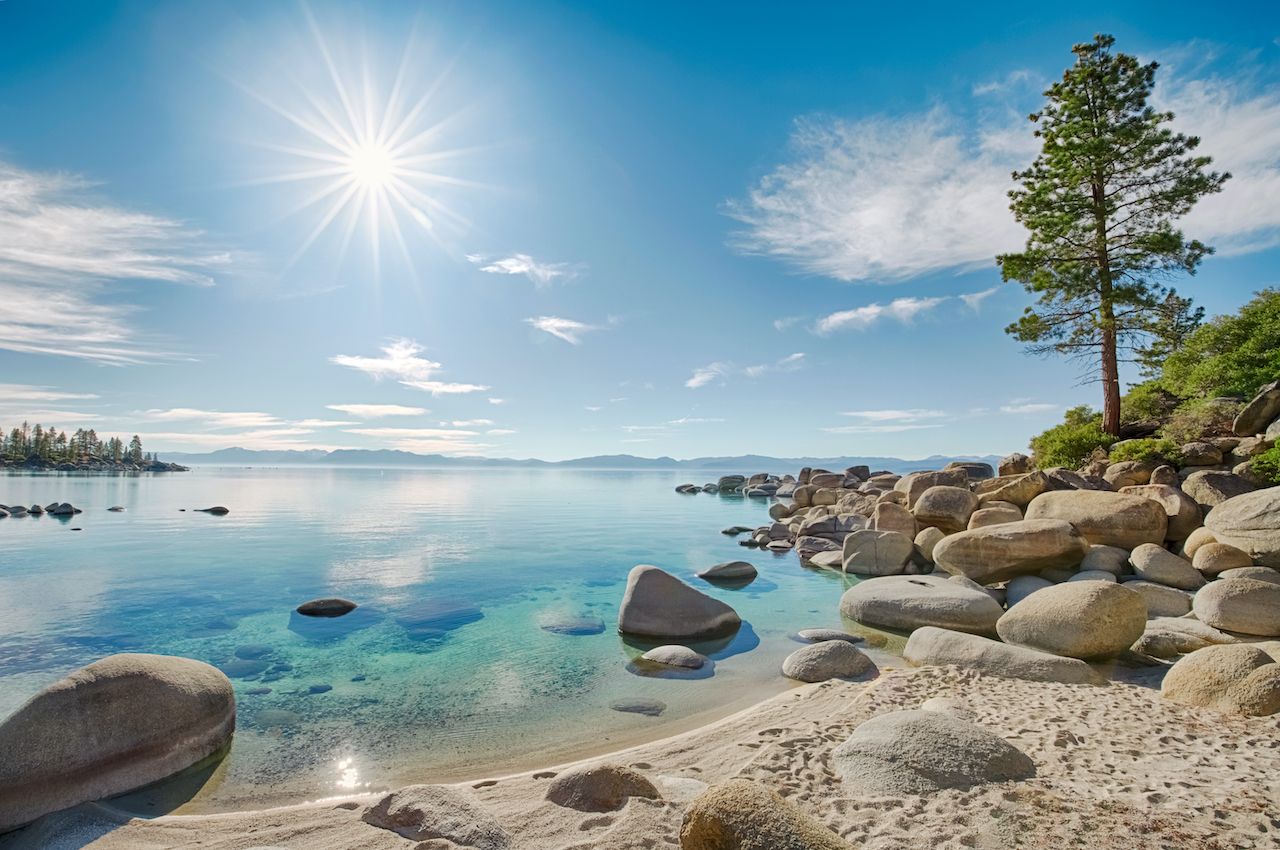
Photo: topseller /Shutterstock
Lake Tahoe, straddling the border between California and Nevada, is one of the deepest, largest, and most scenic alpine lakes in the United States. After the Great Lakes, it holds the most freshwater volume in the country and is second only to Crater Lake in Oregon in terms of depth, plunging to an astonishing 1,645 feet at its deepest point.
While its sheer size (191 square miles) and depth can sometimes make certain areas appear darker, Lake Tahoe is famous for its brilliant clarity and dazzling blue hues. The clearest waters can be found in less-developed areas, particularly along the eastern shore, where smooth granite boulders and sandy-bottomed shallows create a tropical-like turquoise effect. In fact, in some locations, underwater visibility extends up to 70 feet, making it one of the clearest lakes in North America.
Beyond its striking natural beauty, Lake Tahoe is an adventure-lover’s paradise, offering year-round activities. In the summer, visitors can relax on pristine beaches such as Sand Harbor and Zephyr Cove, or take advantage of the lake’s top-tier boating, kayaking, and paddleboarding opportunities. Cyclists and runners can explore the Lake Tahoe East Shore Trail, a 3-mile paved scenic path with breathtaking lake views. Hiking enthusiasts can tackle trails like the Rubicon Trail, which follows the shoreline through pine forests and past secluded coves, or trek to Eagle Lake, a short but rewarding alpine hike near Emerald Bay.
Emerald Bay, one of the most photographed locations in Lake Tahoe, offers a postcard-perfect panorama of deep blue waters, forested slopes, and the iconic Fannette Island, the lake’s only island. One of the best ways to experience Emerald Bay’s breathtaking views is by taking a ride on the Heavenly Mountain Coaster, an alpine roller coaster that winds through the pine forests of Heavenly Mountain Resort, offering sweeping lake vistas.
During winter, Lake Tahoe transforms into a world-class ski destination, with Heavenly, Northstar, and Palisades Tahoe offering some of the best skiing and snowboarding in the Sierra Nevada. The lake itself remains a stunning focal point, often reflecting the snow-capped peaks surrounding it.
Where to stay: The best Lake Tahoe Airbnbs
Tulum, Mexico

Photo: Simon Dannhauer/Shutterstock
Tulum, located on Mexico’s Riviera Maya, offers a blend of ancient history, tropical beauty, and adventure. The Tulum Archaeological Zone, a pre-Columbian Maya city, sits dramatically on a cliff overlooking the Caribbean, with El Castillo as its most famous structure. Below, white-sand beaches and crystal-clear waters make for a perfect coastal retreat.
Beyond the shore, cenotes—natural sinkholes with stunningly clear water—dot the jungle landscape, offering opportunities for snorkeling, swimming, and cave diving. Popular cenotes like Gran Cenote, Dos Ojos, and Calavera provide a glimpse into the region’s unique geology.
Tulum’s bohemian atmosphere, eco-luxe resorts, and vibrant nightlife add to its appeal. The town is known for beachfront dining, mezcal bars, and music-filled beach clubs, making it a top destination for both relaxation and adventure.
Where to stay: The best Tulum Airbnbs
Peyto Lake, Canada
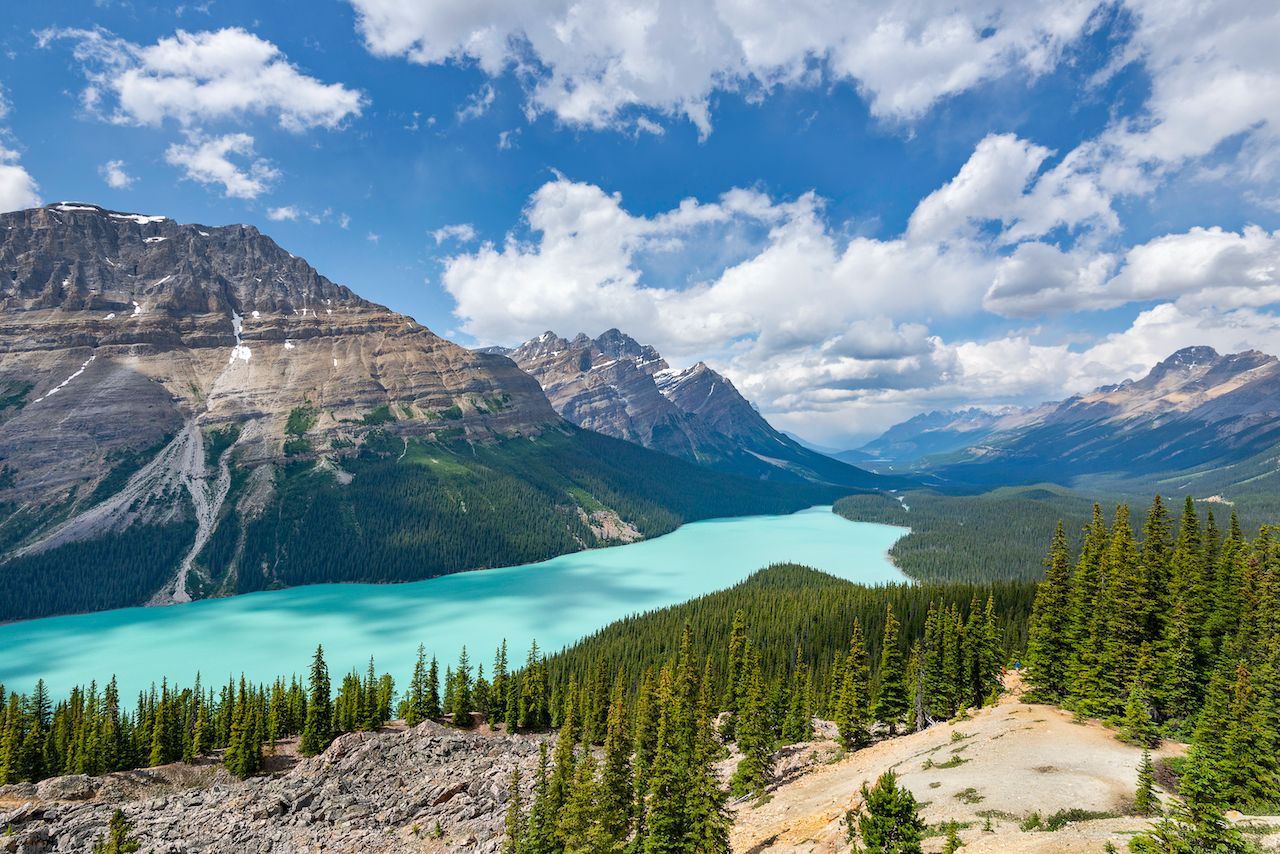
Photo: Levi Coreman/Shutterstock
Peyto Lake, one of the most strikingly blue lakes in the world, owes its brilliant turquoise color to rock flour—fine glacial silt suspended in the water that reflects sunlight. Located in Banff National Park, Alberta, Canada, this glacier-fed lake sits at an elevation of 1,860 meters (6,100 feet), surrounded by towering peaks and dense evergreen forests, creating an unforgettable alpine scene.
The best views of Peyto Lake can be found from Bow Summit, the highest point along the Columbia Icefields Parkway. From here, visitors can take in the lake’s iconic wolf-head shape, which adds to its photogenic appeal. In the winter months, the Peyto Lake Lookout provides a serene, snow-covered vantage point, where the lake’s icy blue hues contrast dramatically with the surrounding white peaks and frost-dusted pines.
The lake’s color is constantly shifting, influenced by the season, time of day, and amount of glacial runoff. During the summer months, when melting glaciers carry the highest concentration of rock flour into the lake, its color appears at its most vibrant—a surreal, almost electric blue. In the shoulder seasons and winter, the lake takes on deeper, more muted shades of teal and sapphire, offering a different yet equally mesmerizing experience with every visit.
Easily accessible by a short, well-maintained trail from the Icefields Parkway, Peyto Lake is a must-visit destination in Banff National Park, whether you’re admiring it from a scenic viewpoint, capturing its ever-changing colors, or simply soaking in the unparalleled beauty of the Canadian Rockies.
Where to stay: The best Peyto Lake hotels
Panari Island, Japan
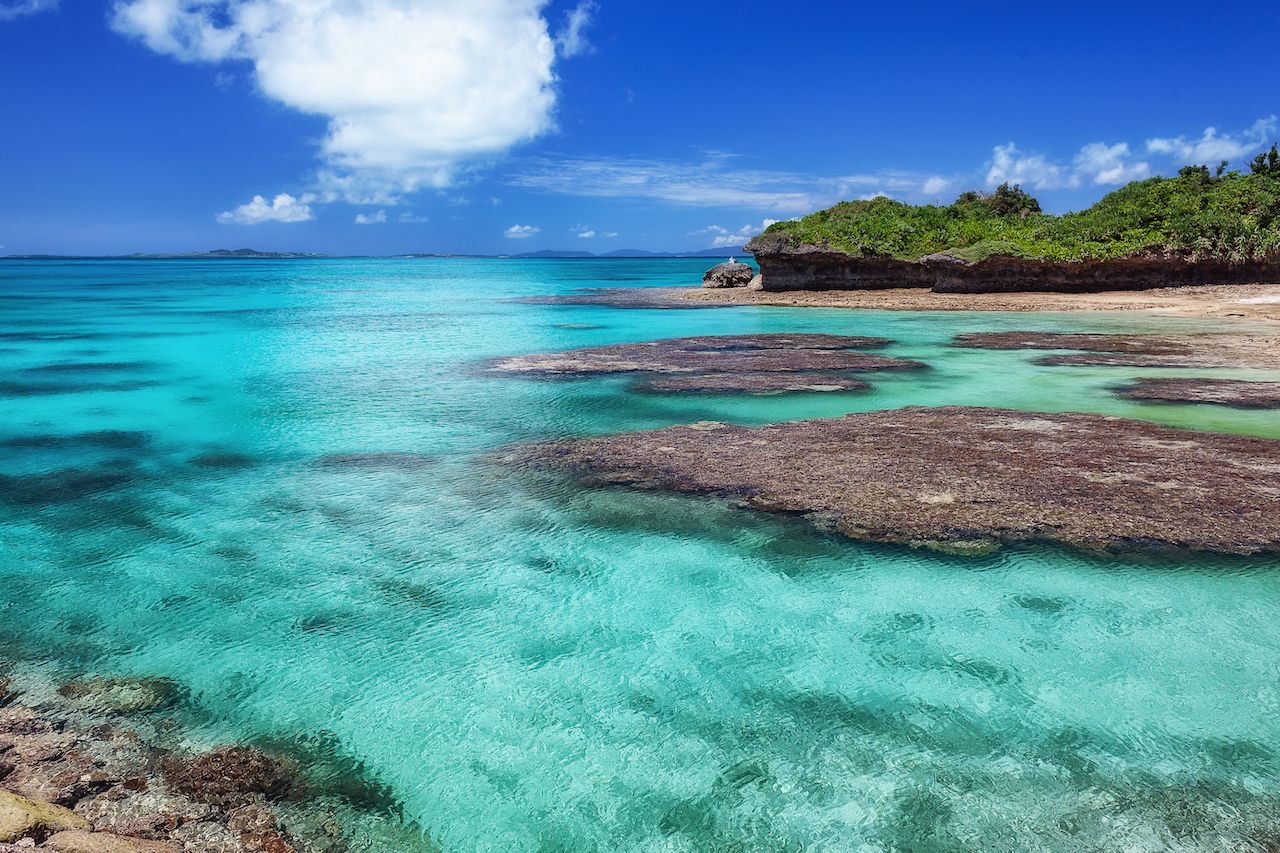
Photo: w.aoki/Shutterstock
Panari, also known as Aragusuku, is one of the most remote and unspoiled island groups in Japan, part of the Yaeyama Islands in Okinawa Prefecture. Situated just a few hundred miles east of Taiwan, the Panari Islands consist of two small islands—Kamiji and Shimoji—and are home to only 15 permanent residents, making it one of the least inhabited places in Japan.
Due to its isolation and strict access regulations, Panari has remained largely untouched by mass tourism, preserving both its pristine natural landscapes and the traditional way of life of its few inhabitants. The only way to visit is by booking a tour through a travel agency or dive shop, as there are no public ferries or direct transportation options. This exclusivity has helped protect the islands’ crystal-clear waters, thriving marine ecosystems, and undeveloped beaches, making it a hidden paradise for those who manage to reach it.
One of Panari’s highlights is Koijigahama Beach, located near the pier on Kamiji Island. This secluded cove of powdery white sand and translucent turquoise water offers a peaceful retreat, free from the crowds found on Okinawa’s more popular islands. The surrounding waters are renowned for their rich marine biodiversity, making them an ideal location for snorkeling and diving, where visitors can encounter vibrant coral reefs, sea turtles, and tropical fish.
For those looking to experience traditional island life, Panari provides a rare glimpse into an Okinawan fishing community that has remained unchanged for generations. Without hotels, restaurants, or modern infrastructure, the islands offer a true off-the-grid escape, where the only sounds come from the gentle waves, rustling palms, and the occasional boat arriving from neighboring islands.
Where to stay: The best Panari Island hotels
Perhentian Islands, Malaysia
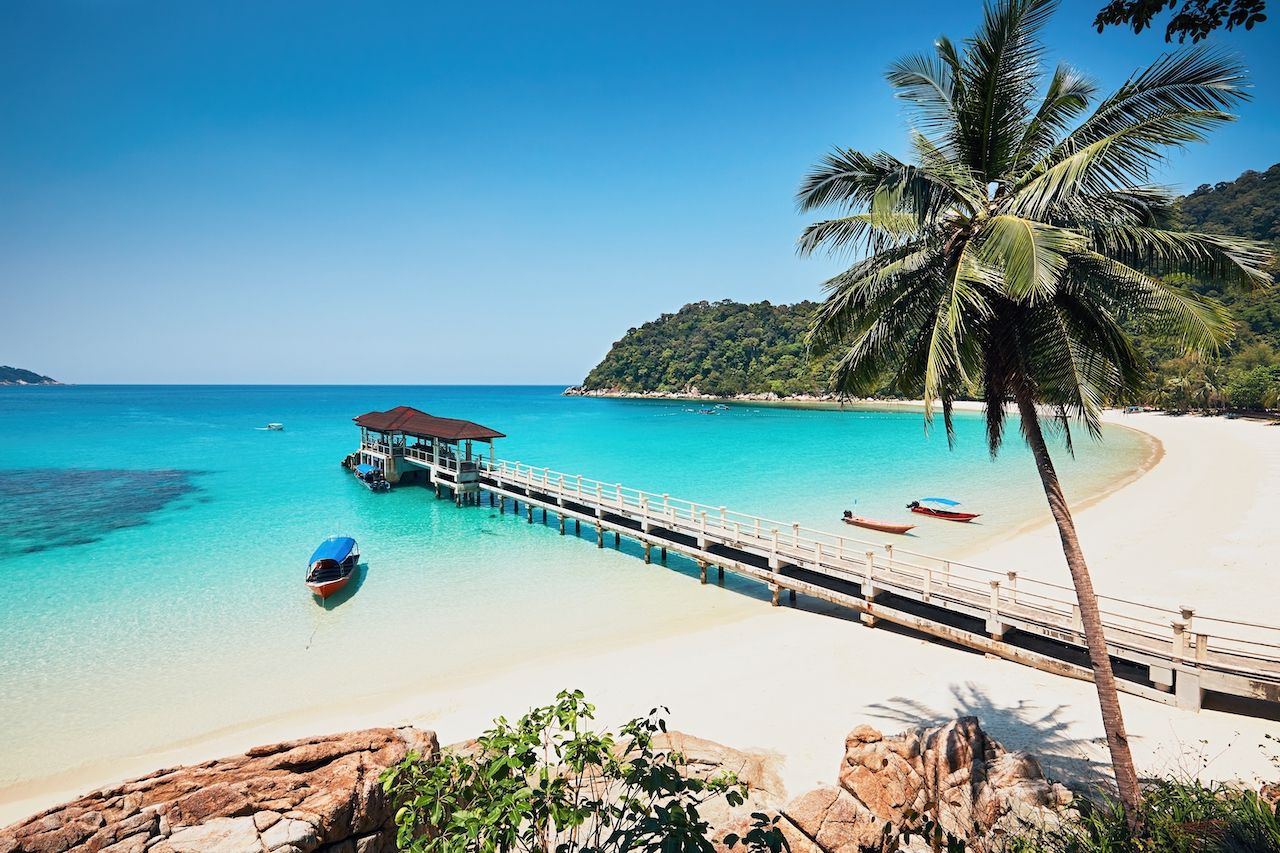
Photo: Jaromir Chalabala/Shutterstock
The Perhentian Islands, located off the eastern coast of Malaysia, are a tropical paradise known for their crystal-clear waters, powdery white-sand beaches, and thriving marine life. The archipelago consists of two main islands—Perhentian Besar (Big Perhentian) and Perhentian Kecil (Small Perhentian)—along with several smaller, uninhabited islets. While Perhentian Besar is known for its quieter, family-friendly resorts, Perhentian Kecil attracts a more budget-conscious and backpacker crowd, offering a vibrant yet laid-back atmosphere.
What makes the Perhentian Islands stand out is their remarkably clear waters, making them one of the best snorkeling and diving destinations in Southeast Asia. Swimmers and snorkelers can easily spot colorful reef fish, sea turtles, clownfish, stingrays, and even blacktip reef sharks, just a few meters from shore. The islands are surrounded by vibrant coral reefs, many of which are part of the Pulau Redang National Marine Park, a protected area where fishing is strictly prohibited to maintain marine biodiversity.
For divers, the Perhentians offer a variety of sites, from shallow coral gardens to deeper wreck dives. Popular spots include Turtle Bay, where green and hawksbill turtles can be seen gliding through the water, and Sugar Wreck, a sunken cargo ship now covered in coral and home to an array of marine species. Those looking for a more relaxed experience can simply rent a kayak or hop on a boat tour to explore hidden coves and secluded beaches around the islands.
Beyond the water, the Perhentians offer lush jungle trekking trails, connecting beaches and offering chances to spot dusky leaf monkeys, monitor lizards, and hornbills. Since there are no cars or roads on the islands, getting around is done by walking, water taxis, or long-tail boats, adding to the destination’s untouched, castaway feel.
Where to stay: The best Perhentian Islands hotels
To Sua Ocean Trench, Samoa
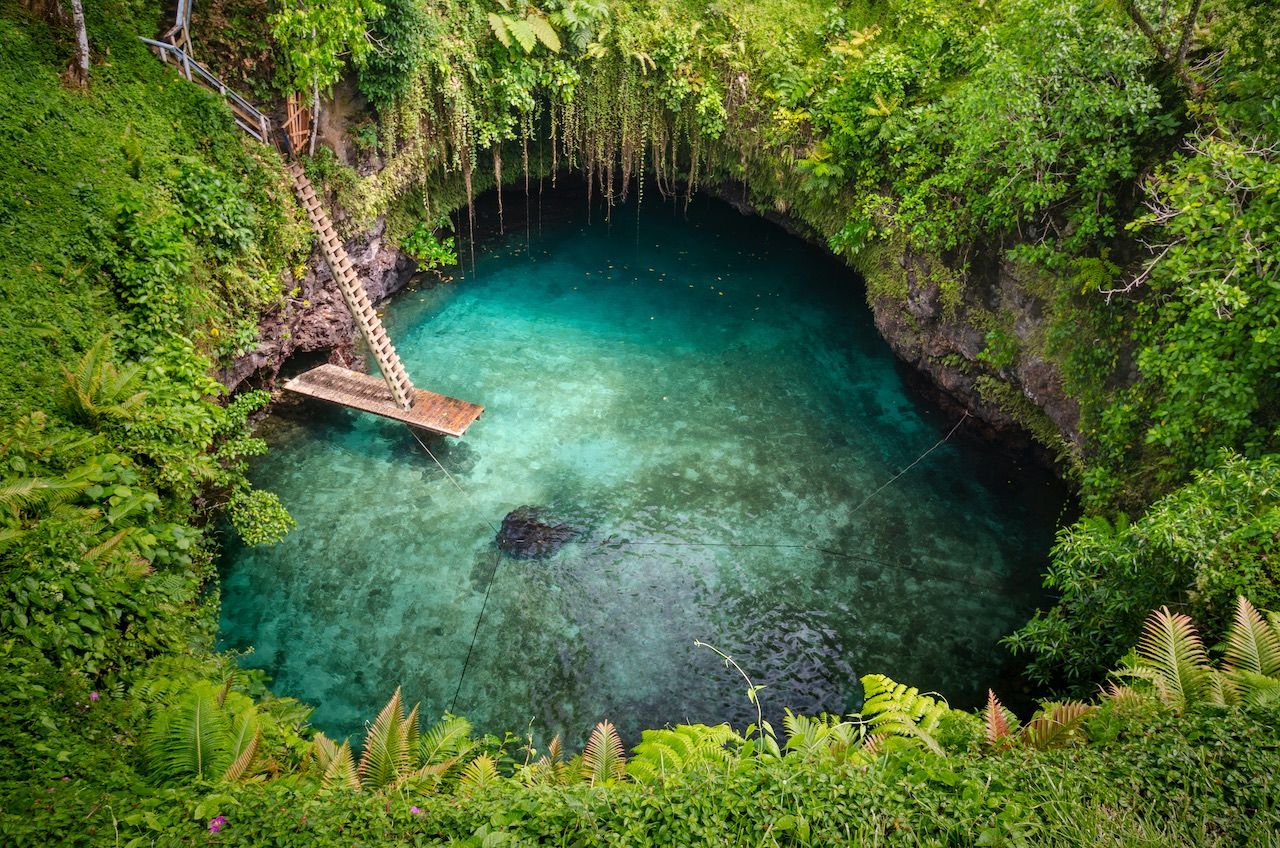
Photo: Martin Vlnas/Shutterstock
Located in Lotofaga, a small village on the island of Upolu, Samoa, the To Sua Ocean Trench is one of the most breathtaking natural swimming holes in the world. To Sua, which translates to “giant swimming hole” in Samoan, is a 98-foot-deep (30-meter) natural sinkhole filled with vivid turquoise water, surrounded by lush tropical vegetation and volcanic rock formations.
Formed by an ancient lava tube collapse, To Sua is connected to the ocean via an underground cave system, allowing seawater to flow in and out, creating a serene, tidal pool teeming with tropical fish. Despite being ocean-fed, the trench remains calm and swimmable year-round, making it a must-visit destination for those seeking a unique, natural swimming experience.
Accessing the water is an adventure in itself. Visitors can descend via a steep wooden ladder leading to a platform or, for thrill-seekers, take a plunge straight into the crystal-clear depths below. Once inside, the warm, pristine waters offer an unforgettable swim, where you can snorkel among fish, explore the submerged lava tunnel, or simply float beneath the towering, fern-covered cliffs.
The surrounding area, part of a well-maintained coastal park, offers lush gardens, scenic viewpoints, and traditional Samoan fales (open-air huts) where visitors can relax and take in the stunning views of the South Pacific. Nearby, the black sand beaches of Lalomanu and the dramatic cliffs of the Upolu coastline provide additional opportunities for exploration.
Where to stay: The best Upolu hotels
Whitehaven Beach, Australia
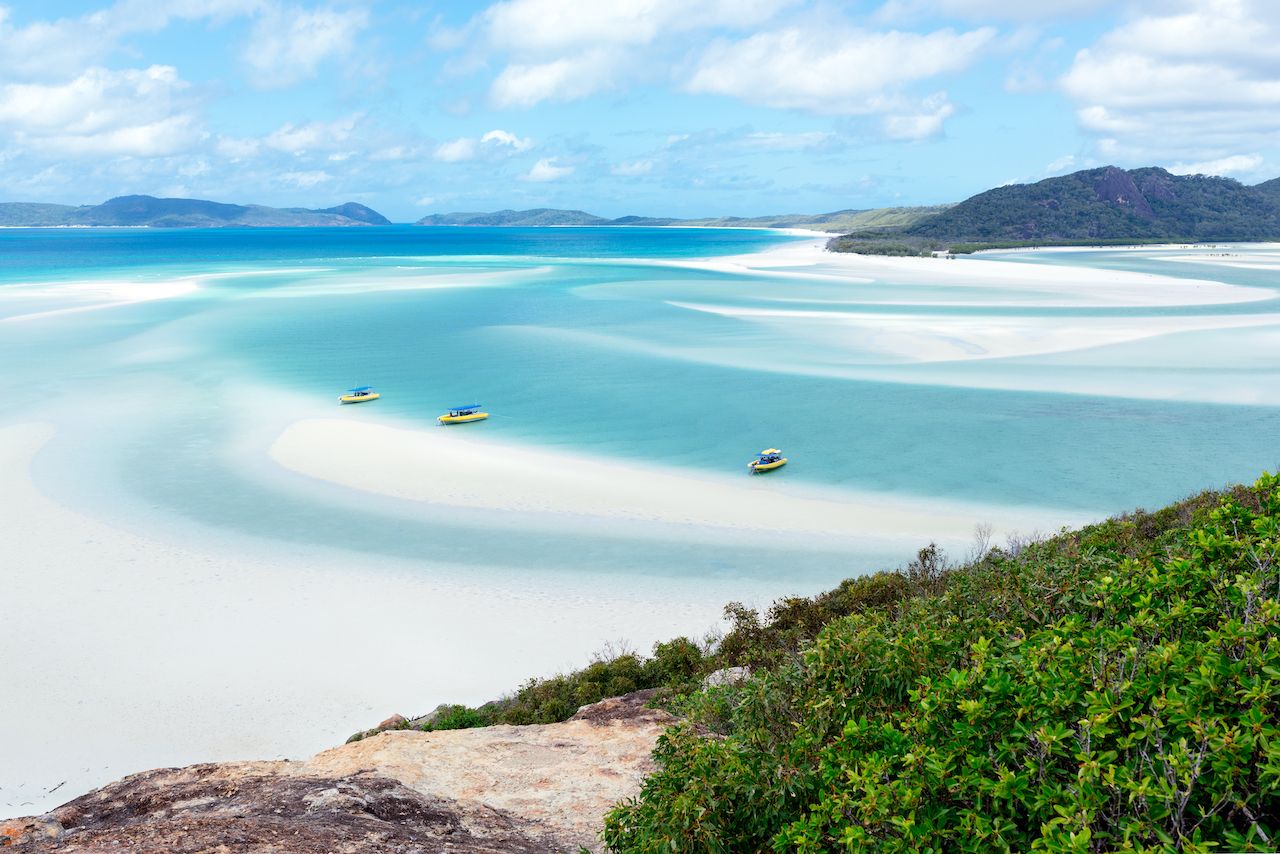
Photo: autau/Shutterstock
Whitehaven Beach, a 4.3-mile (7-kilometer) stretch of pristine coastline in Queensland’s Whitsunday Islands, is widely regarded as one of the most beautiful and unspoiled beaches in the world. Located in the heart of the Great Barrier Reef, this protected paradise is part of Whitsunday Island National Park, ensuring that it remains free from development and pollution, earning its reputation as one of the cleanest beaches in Australia.
What sets Whitehaven Beach apart is its pure, powdery white sand, composed of 98 percent silica—a rare composition that gives it an almost luminescent brightness and an ultra-soft texture. Unlike regular beach sand, silica sand doesn’t retain heat, making it cool underfoot even on the hottest days. The high silica content also contributes to the crystal-clear waters, which, combined with the shallow seabed, create an ever-changing display of swirling patterns and vibrant hues of blue, green, and turquoise.
One of the most breathtaking sights is found at Hill Inlet, located at the northern end of the beach. Here, the tidal shifts sculpt the white silica sands and clear blue waters into mesmerizing, swirling patterns, best viewed from the Hill Inlet Lookout after a short hike through the tropical rainforest. This constantly shifting seascape is one of the most photographed natural wonders in Australia.
For those looking to experience the waters firsthand, snorkeling and swimming are among the easiest ways to explore Whitehaven’s marine beauty. The Great Barrier Reef’s vibrant marine life, including colorful fish, rays, and sea turtles, can often be spotted just offshore. More adventurous visitors can take a kayak or paddleboard to explore the shoreline at a leisurely pace.
Where to stay: The best Whitehaven Beach Airbnbs
Crater Lake, USA
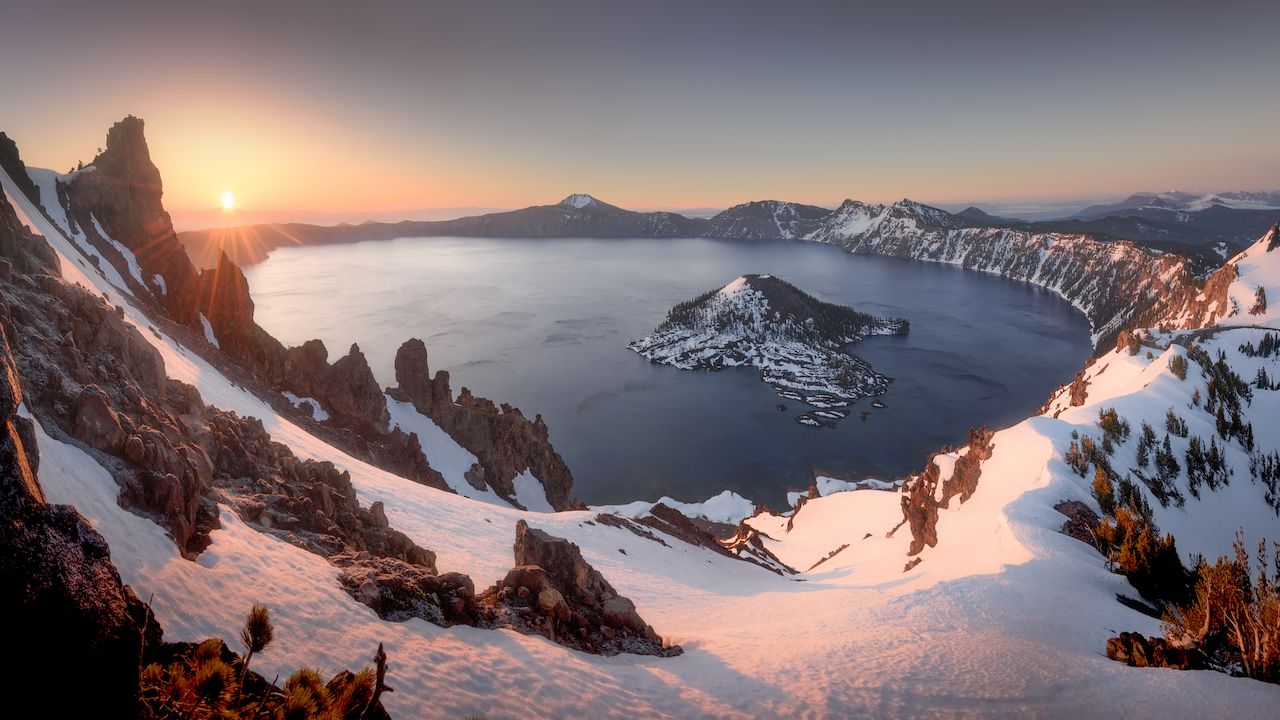
Photo: Theerapat Chawannakul/Shutterstock
The main attraction of Oregon’s only national park, Crater Lake is renowned for its strikingly deep blue waters, breathtaking mountain scenery, and fascinating geological history. Formed over 7,000 years ago when Mount Mazama collapsed after a massive volcanic eruption, the lake now sits in a caldera—a bowl-shaped depression left behind by the explosion. With a depth of approximately 1,943 feet (592 meters), it is the deepest lake in the United States and the ninth deepest in the world.
What makes Crater Lake’s water uniquely pure and clear is that it is fed almost entirely by rain and snowmelt, with no rivers or streams bringing in outside sediment or pollutants. As a result, the lake is considered one of the cleanest and clearest large bodies of water on Earth, with visibility extending up to 100 feet (30 meters) below the surface in some areas. This remarkable clarity contributes to the lake’s intensely rich blue color, a result of sunlight penetrating deeply into the water and scattering shorter wavelengths.
Beyond the lake itself, Crater Lake National Park offers plenty to explore, including the dramatic remnants of Mount Mazama’s volcanic past. One of the most famous formations is the Phantom Ship, a small rocky island resembling a ghostly ship adrift in the lake. Another notable feature is Wizard Island, a 400,000-year-old cinder cone that juts out of the lake and can be explored by boat during the summer months.
Surrounding the lake, old-growth forests provide a stunning contrast to the caldera’s rocky cliffs. The park is home to a mix of ponderosa pines, hemlocks, and ancient whitebark pines, some of which are over 1,000 years old. Wildlife thrives in this remote alpine environment, with sightings of black bears, elk, bald eagles, spotted owls, and even the endemic Mazama newt, found only in Crater Lake’s waters.
Visitors can experience the lake from multiple perspectives, whether by driving the 33-mile Rim Drive, which offers breathtaking overlooks, hiking to Garfield Peak or Watchman Peak for panoramic views, or taking a boat tour to Wizard Island for an up-close look at its volcanic formations and lava flows.
Where to stay: The best Crater Lake Airbnbs
Wineglass Bay, Australia
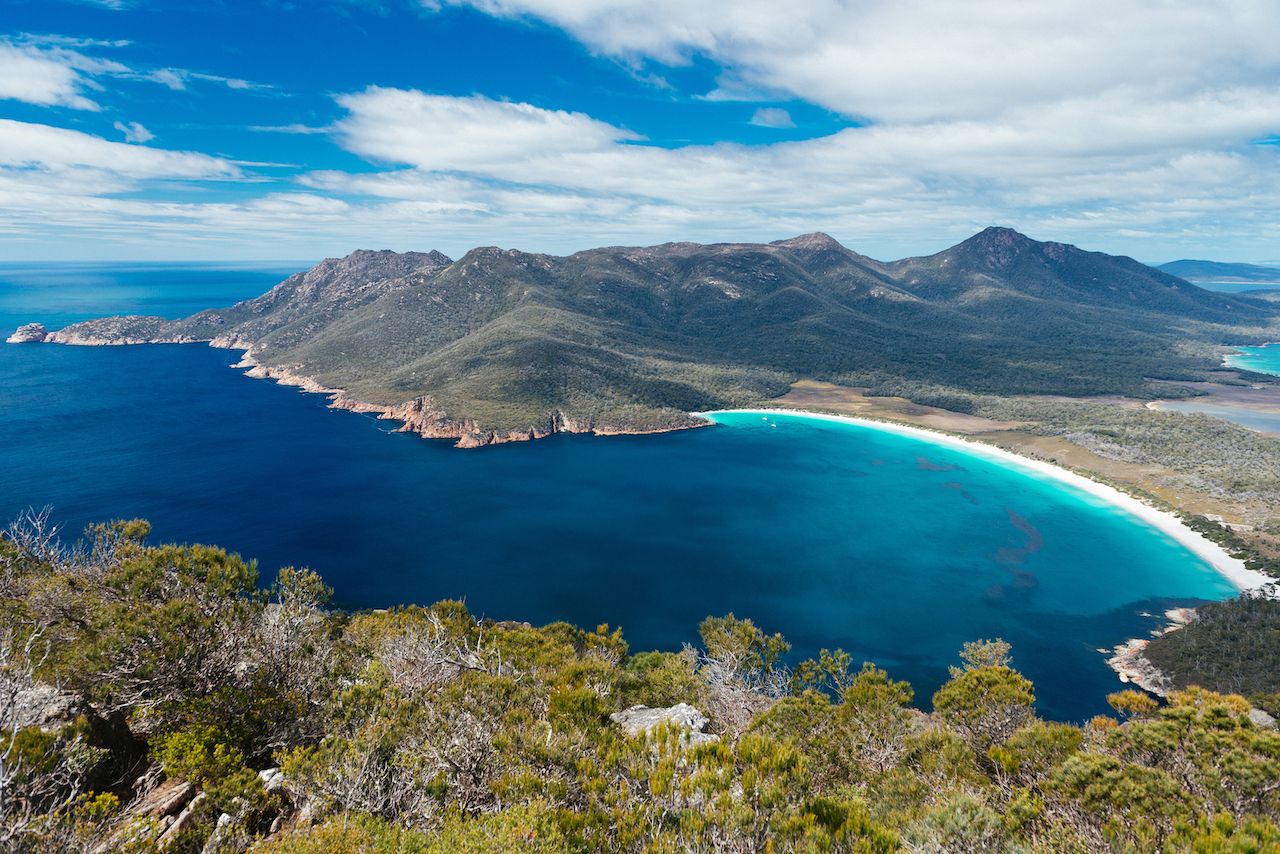
Photo: Henshaw Imagery/Shutterstock
Wineglass Bay, located within Freycinet National Park on the east coast of Tasmania, Australia, is renowned for its breathtaking white-sand beaches, sapphire-blue waters, and dramatic pink granite mountains. Consistently ranked among Australia’s most beautiful beaches, this crescent-shaped bay offers a secluded and pristine escape for nature lovers, adventure seekers, and photographers alike.
Surrounded by the rugged Hazards Mountain Range, Wineglass Bay is part of a protected coastal wilderness where the serene, sheltered waters provide ideal conditions for a range of outdoor activities. Hiking is particularly popular, with the Wineglass Bay Lookout Track offering panoramic views of the bay from above, while the more challenging Wineglass Bay and Hazards Beach Circuit leads visitors through forests and along stunning coastal cliffs.
The bay’s crystal-clear waters also make it a prime spot for snorkeling, scuba diving, and sea kayaking, where you can explore hidden coves and vibrant marine life. Boating and sailing allow for a different perspective of the coastline, while rock climbing and bushwalking provide opportunities to experience Tasmania’s diverse landscapes up close. Fishing and seafood lovers can also enjoy fresh local catches in Coles Bay, the gateway town to Freycinet National Park.
Wineglass Bay is a haven for wildlife enthusiasts, particularly birdwatchers, as it is home to a variety of native and migratory bird species. The white-bellied sea eagle is one of the most iconic sights, often seen soaring over the bay’s pristine waters. Wallabies, echidnas, and even the elusive Tasmanian devil can sometimes be spotted in the surrounding forests.
Where to stay: The best Wineglass Bay Airbnbs ![]()





![‘Vlad Circus: Curse Of Asmodeus’, Sequel to ‘Descend Into Madness’ Announced for PC, Consoles [Trailer]](https://i0.wp.com/bloody-disgusting.com/wp-content/uploads/2025/03/curseofasmodeus.jpg?fit=900%2C580&ssl=1)



















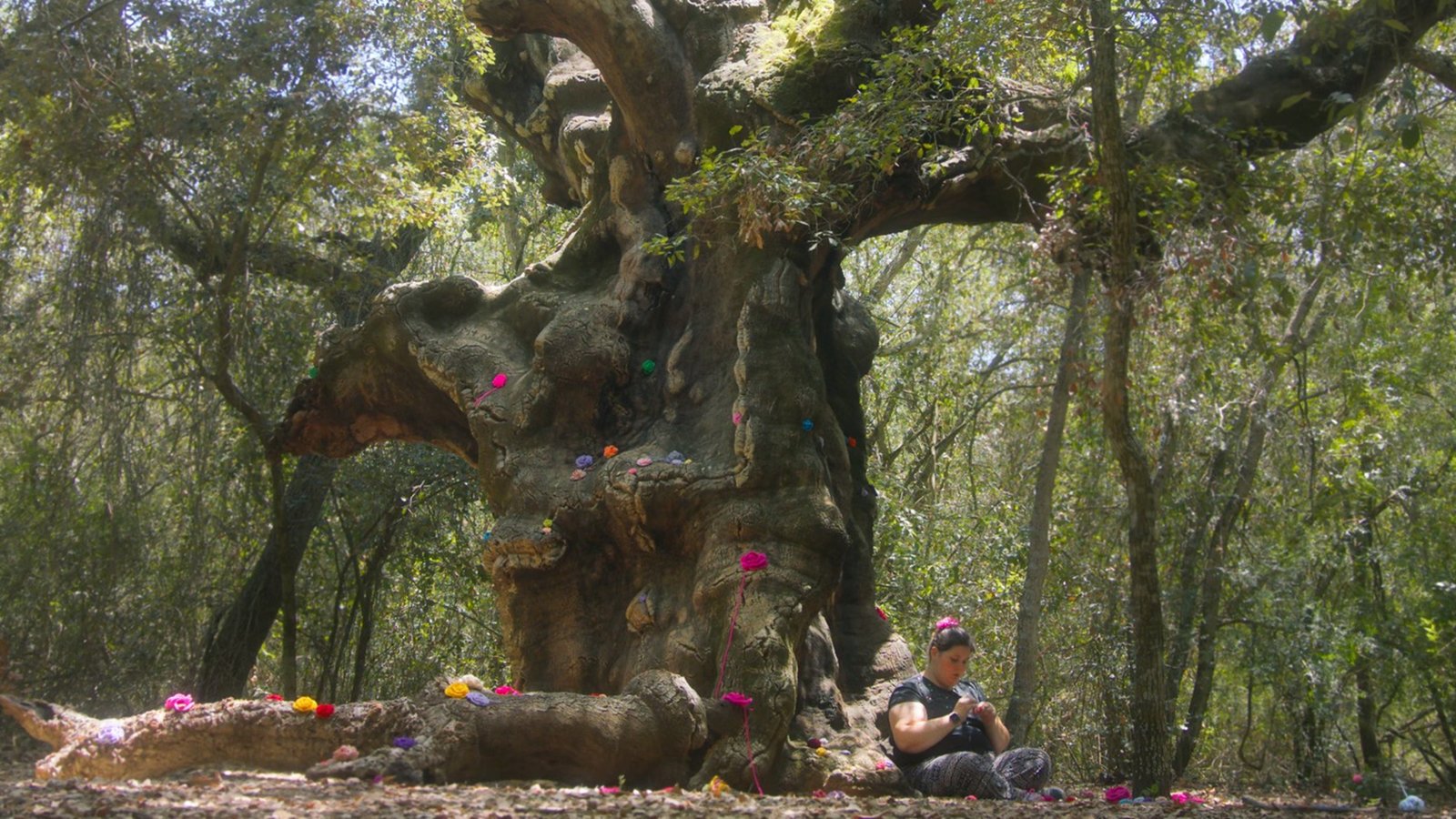



























































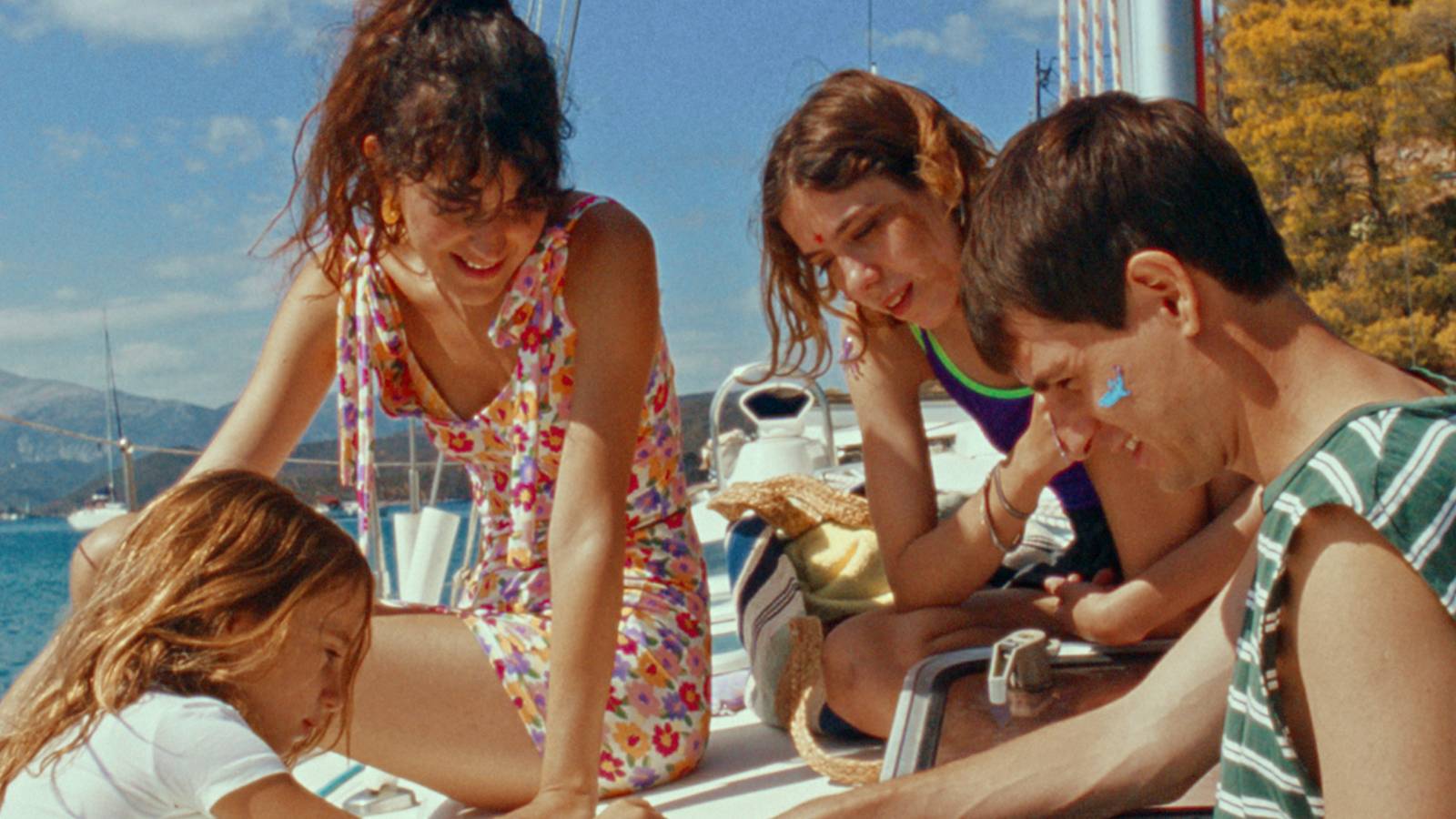




















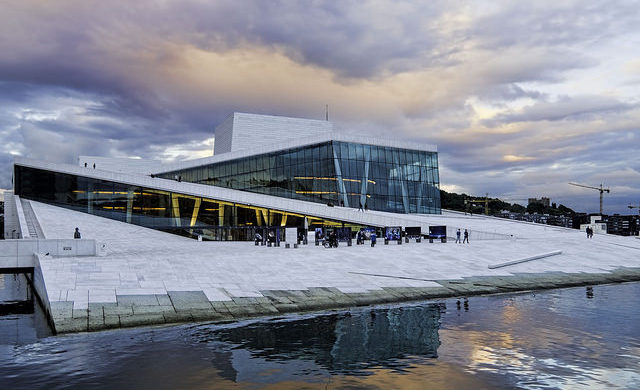
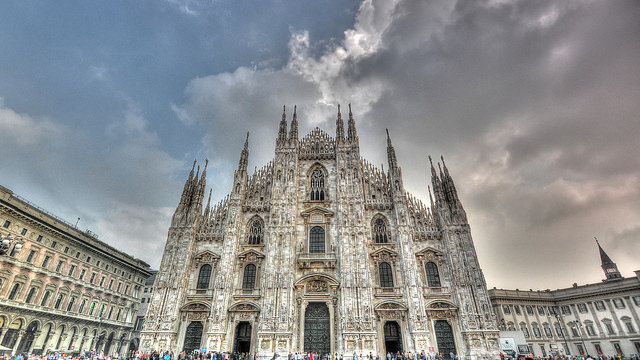
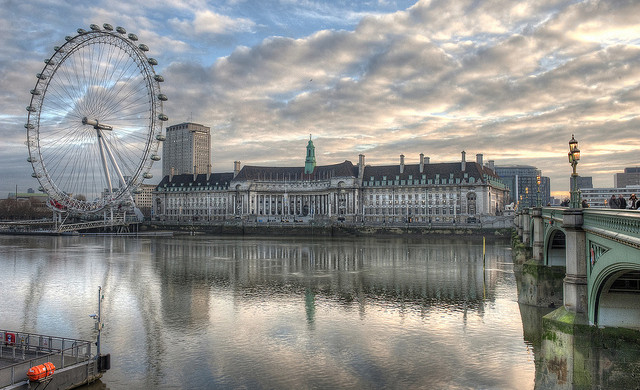

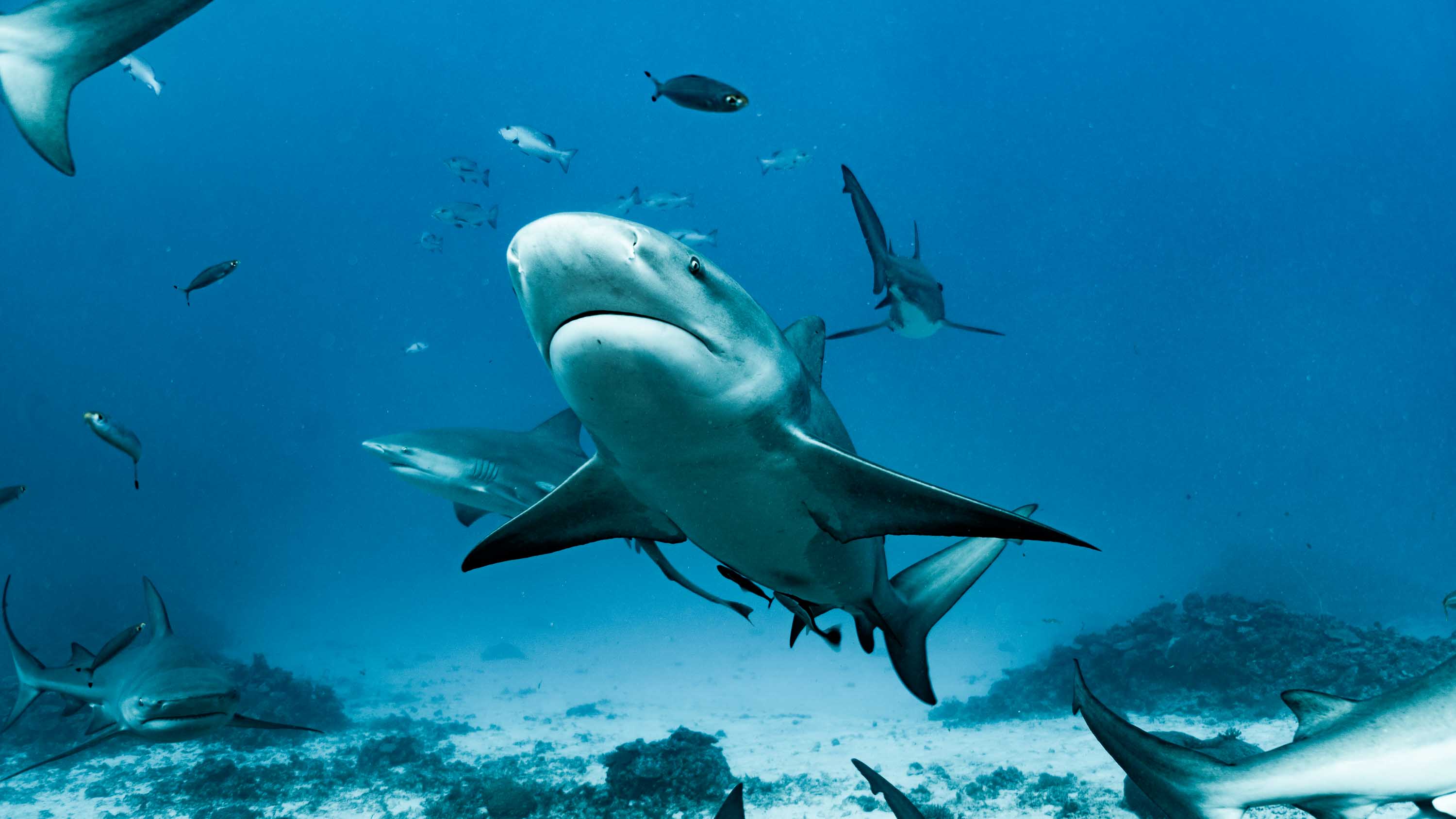
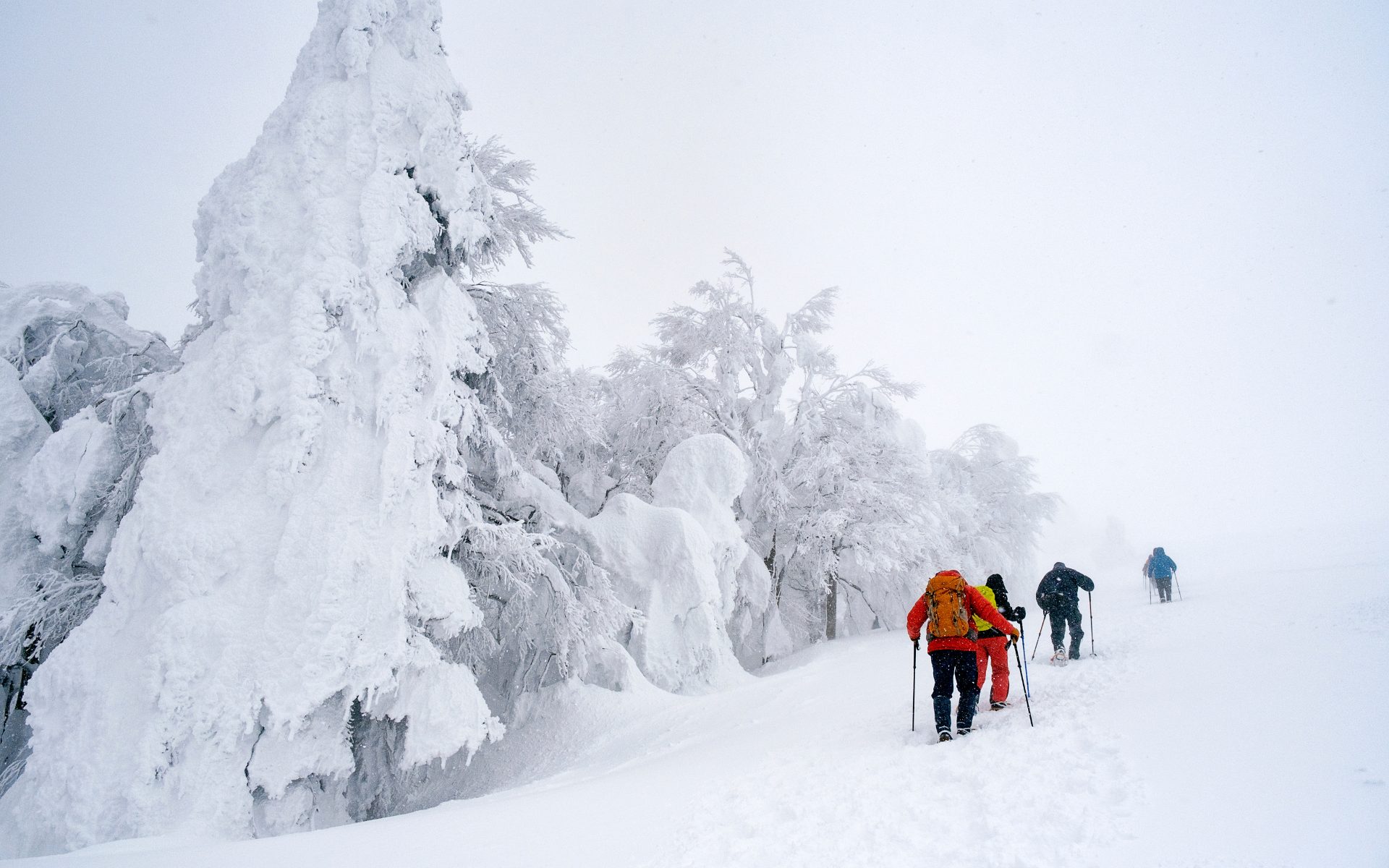






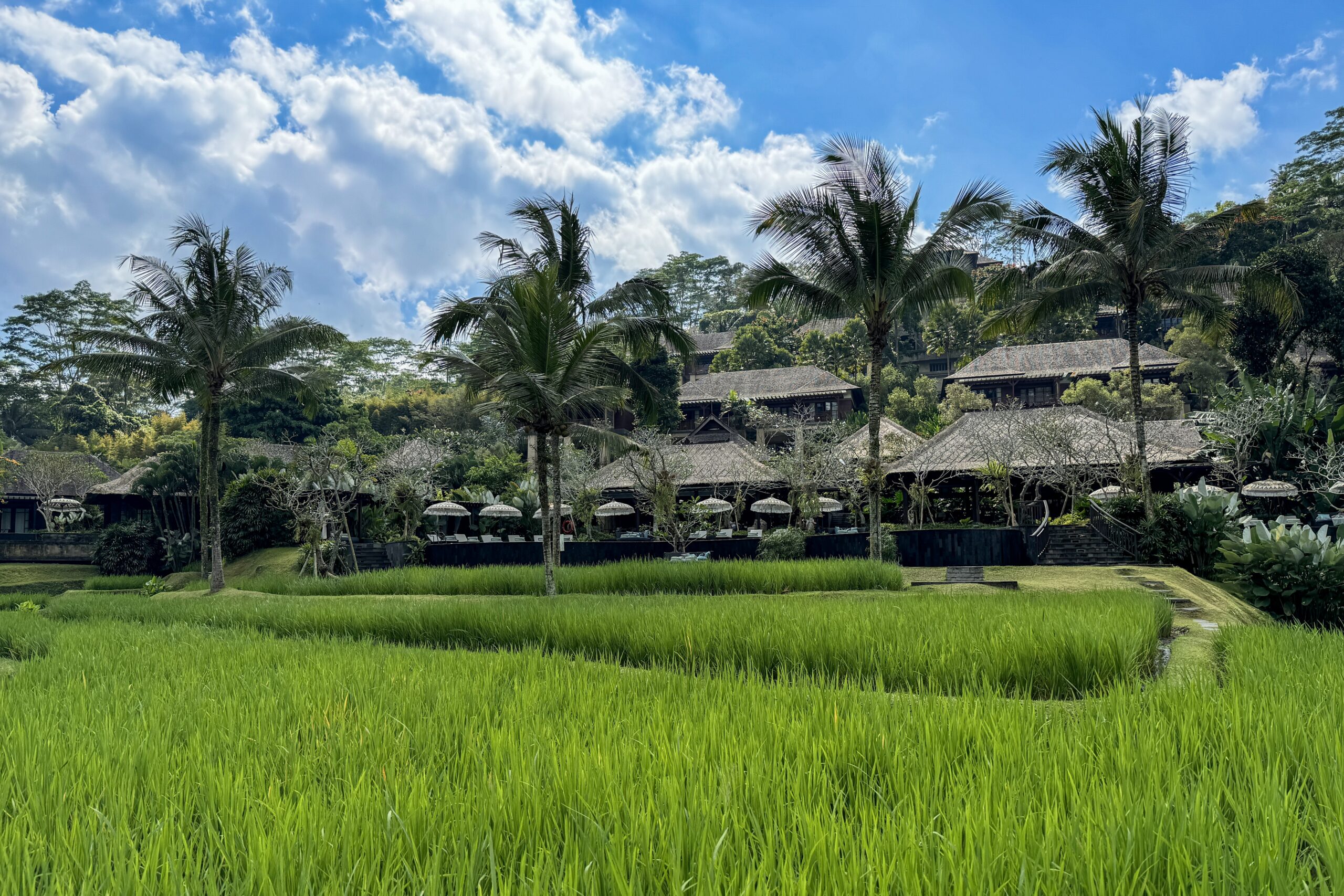














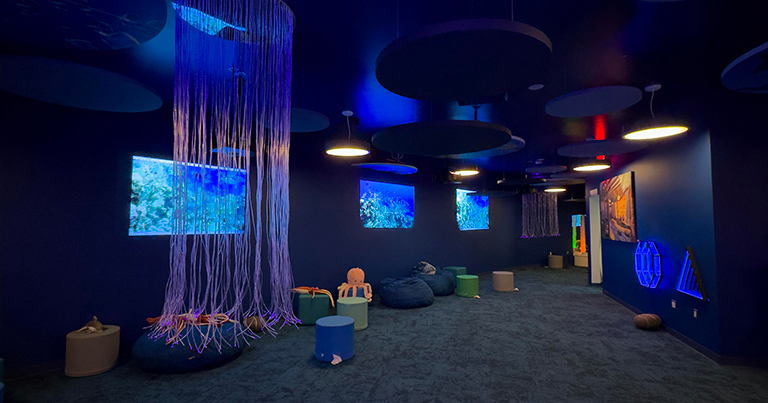




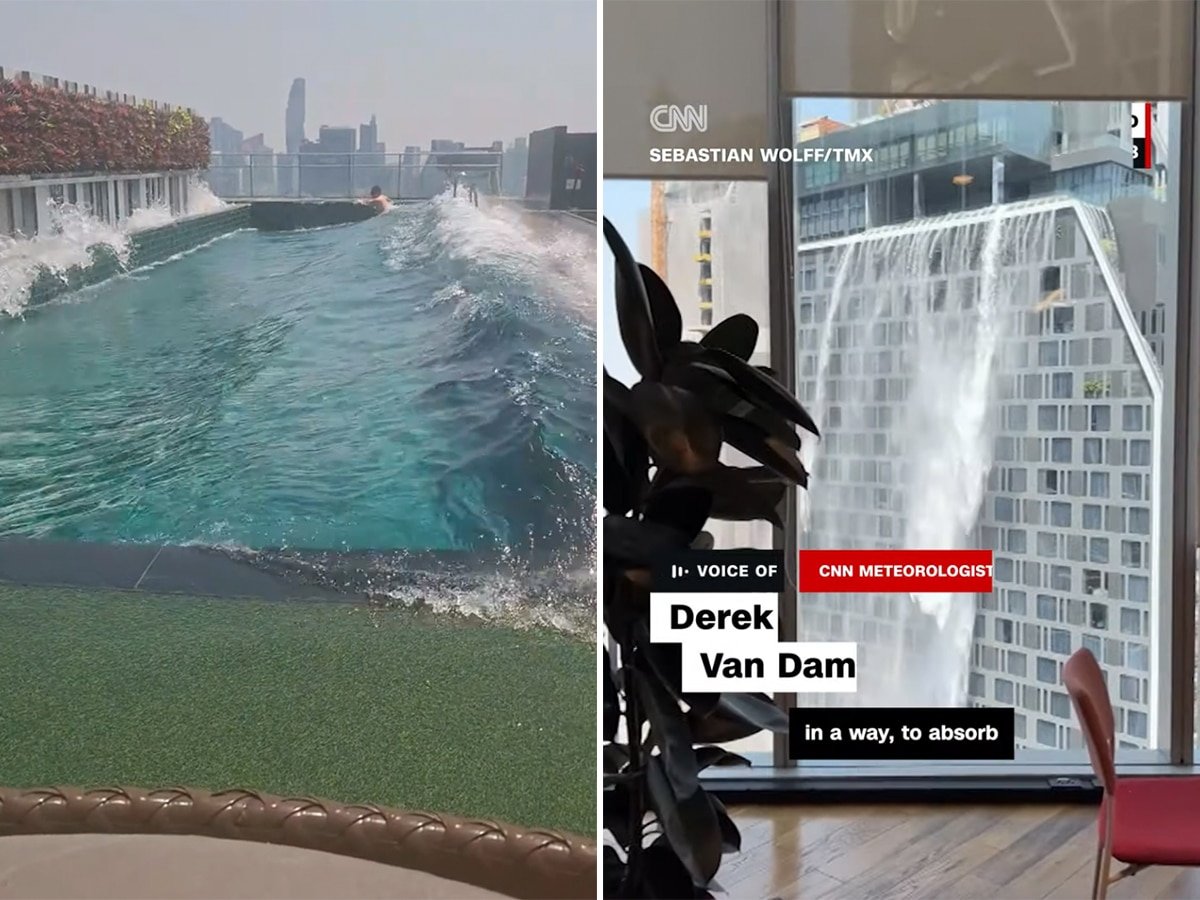

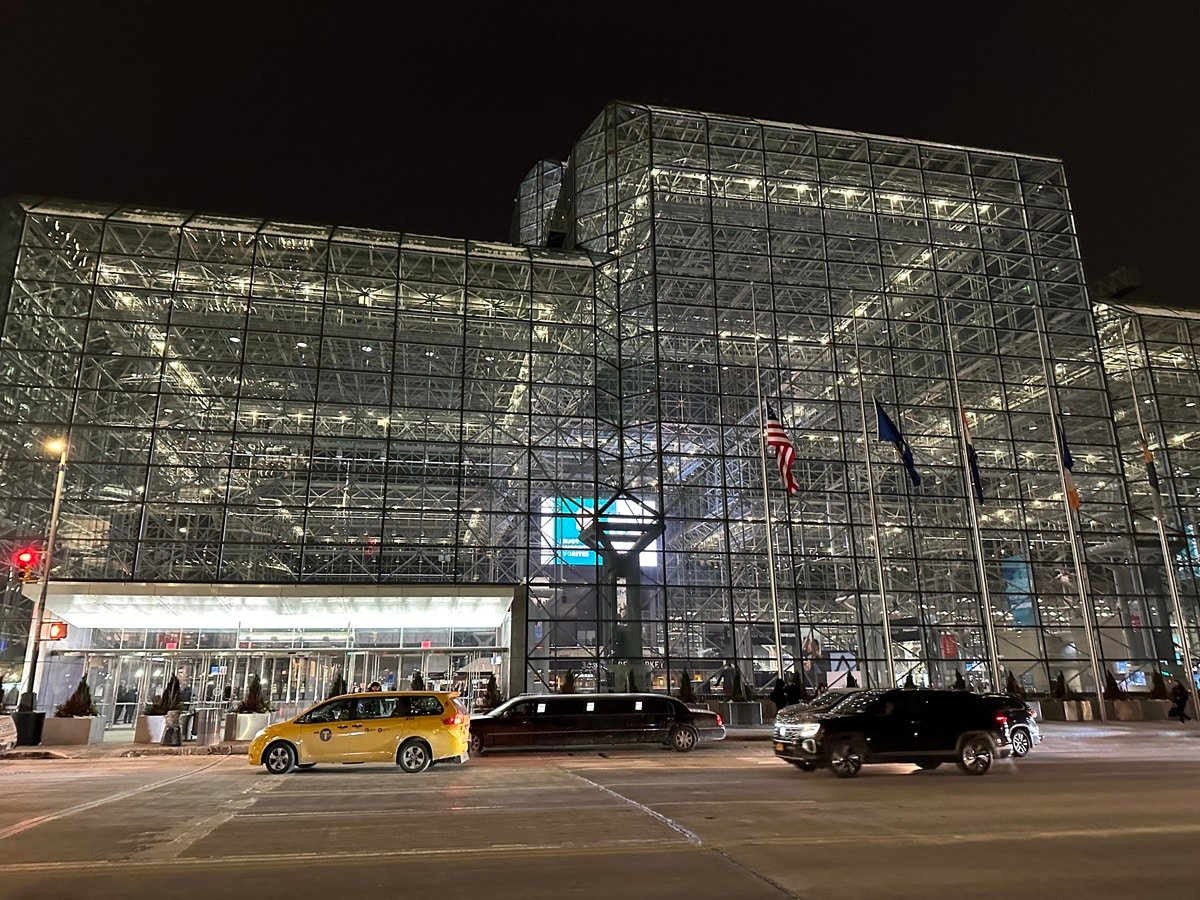




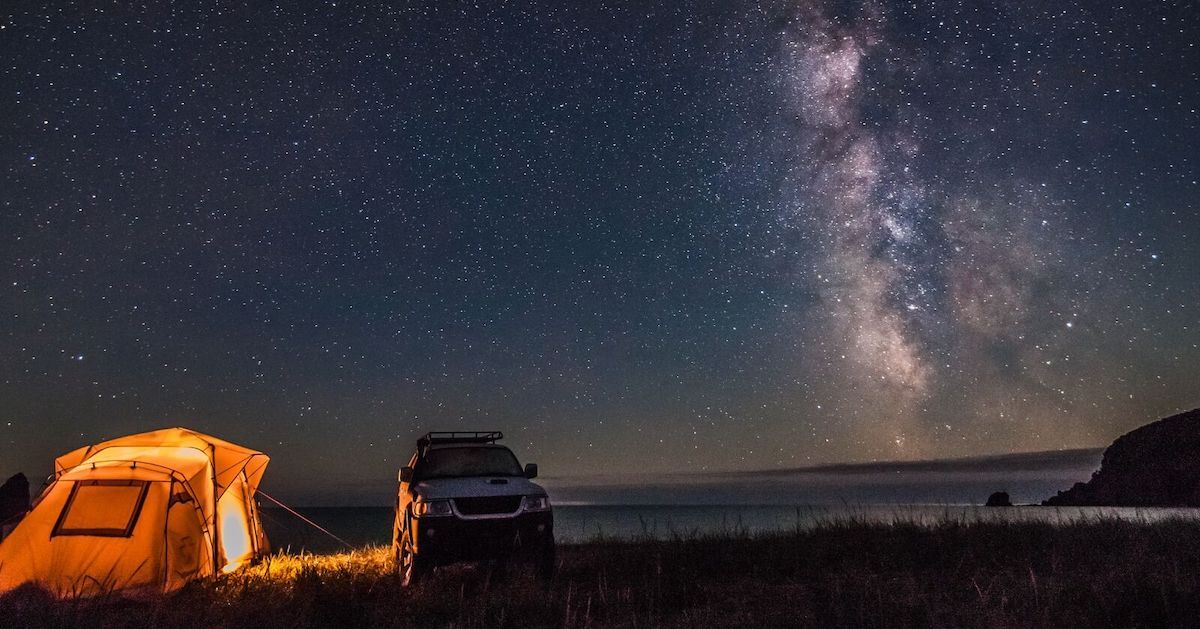

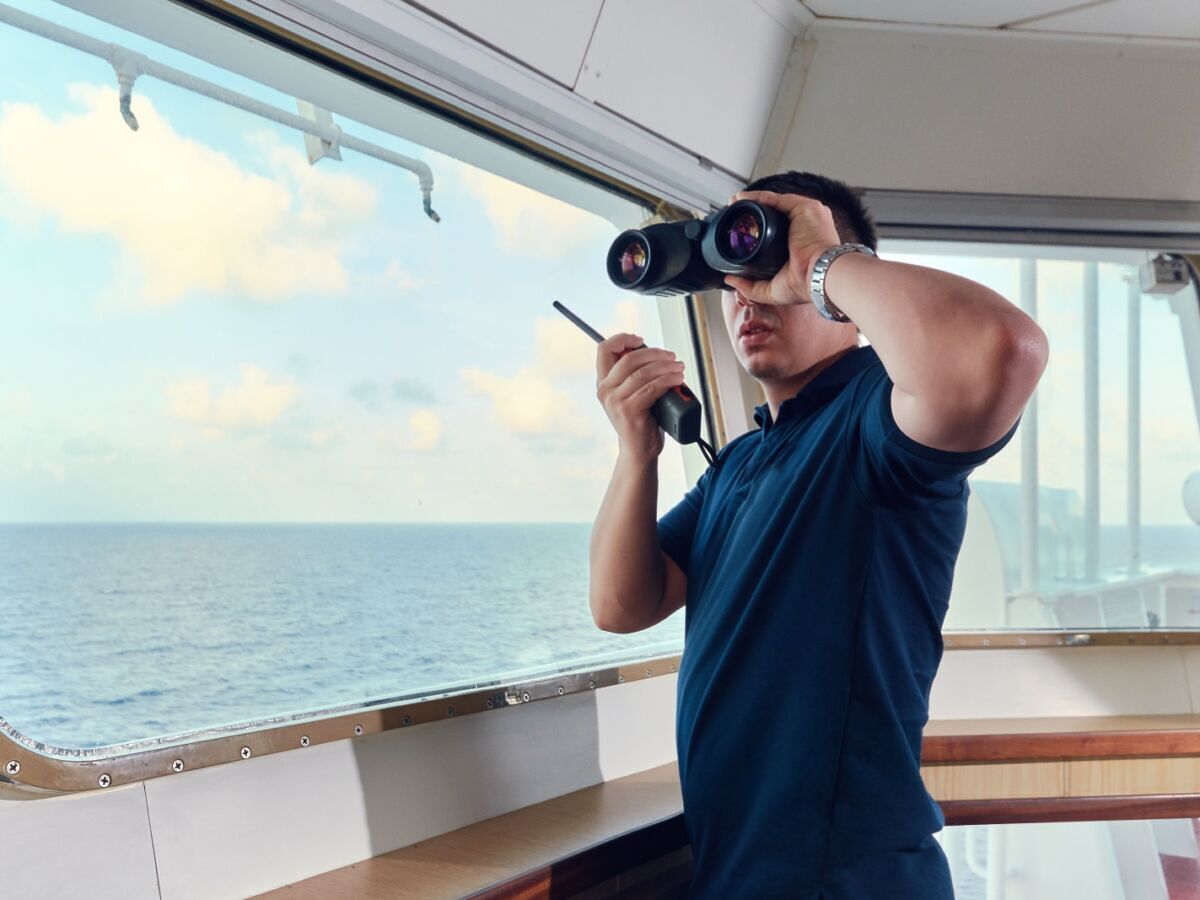























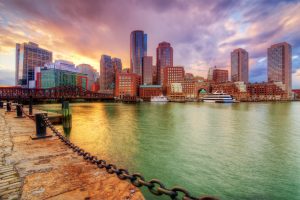











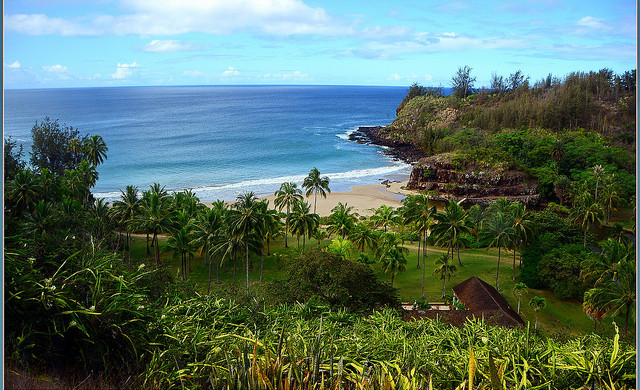


























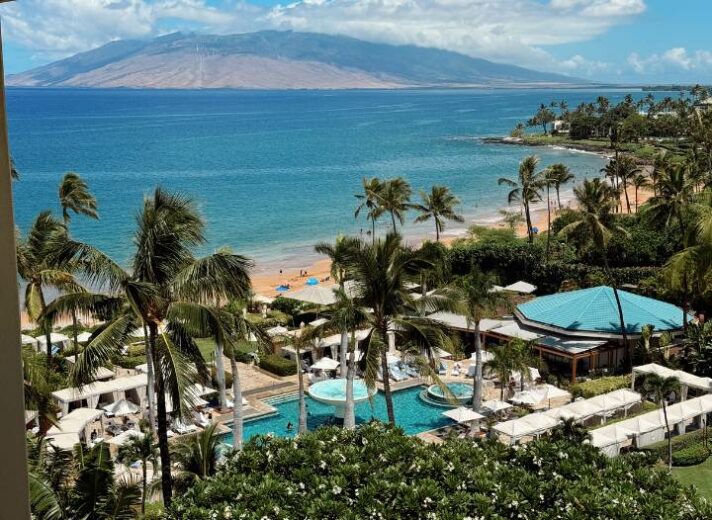










.jpg?width=1920&height=1920&fit=bounds&quality=80&format=jpg&auto=webp#)
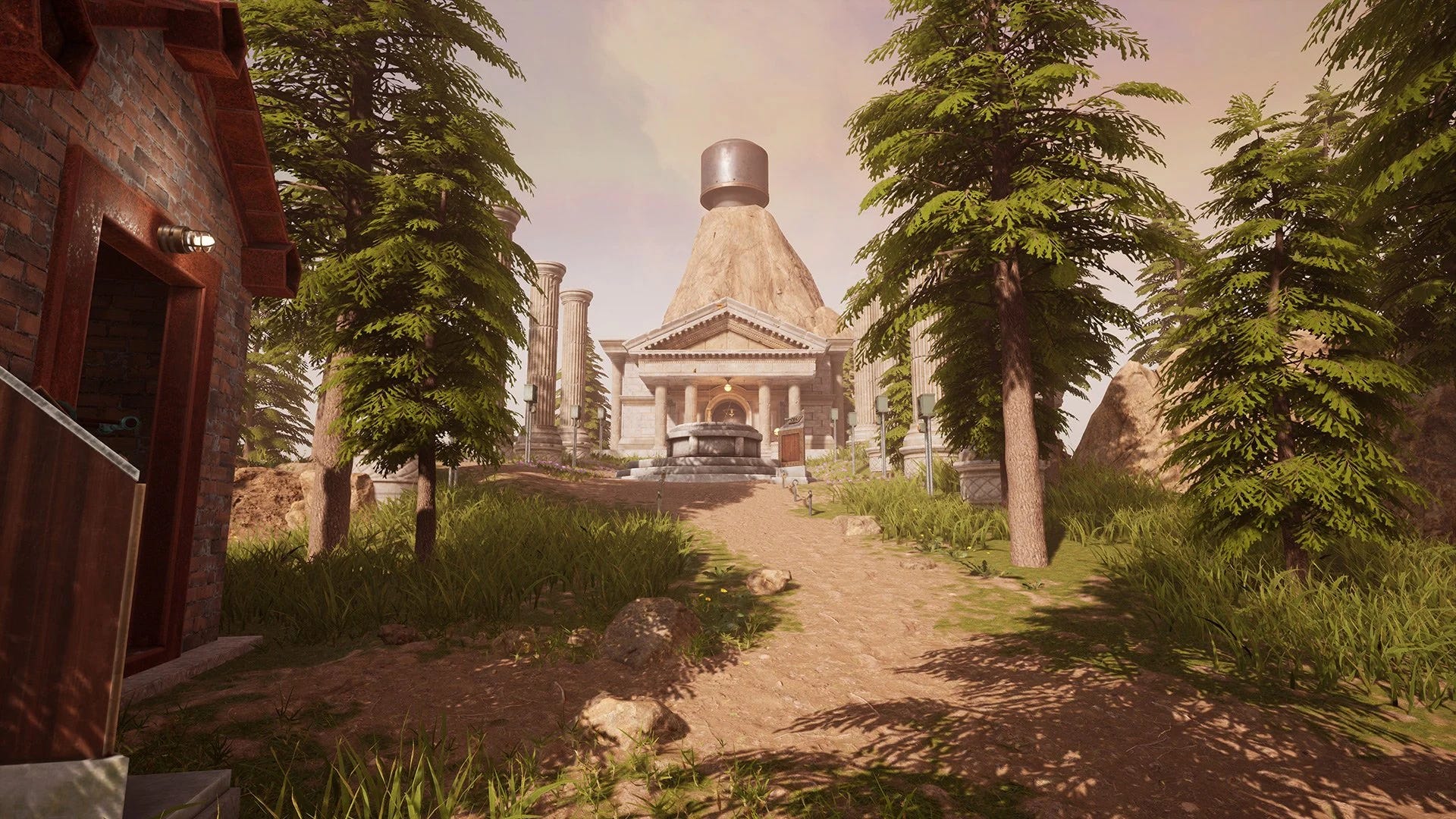

OSAMU-NAKAMURA.jpg?width=1920&height=1920&fit=bounds&quality=80&format=jpg&auto=webp#)





.png?#)



































































































































































































































